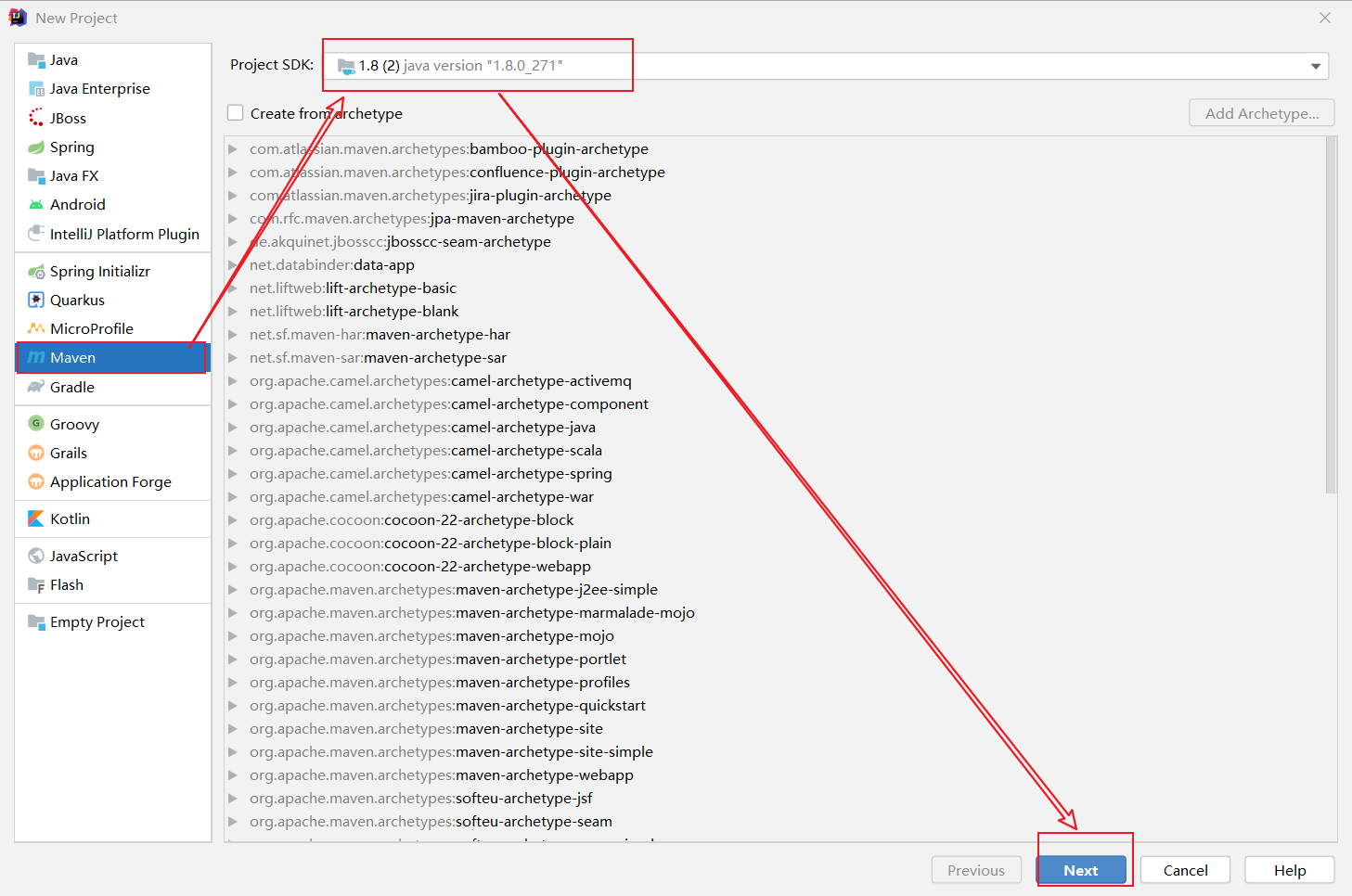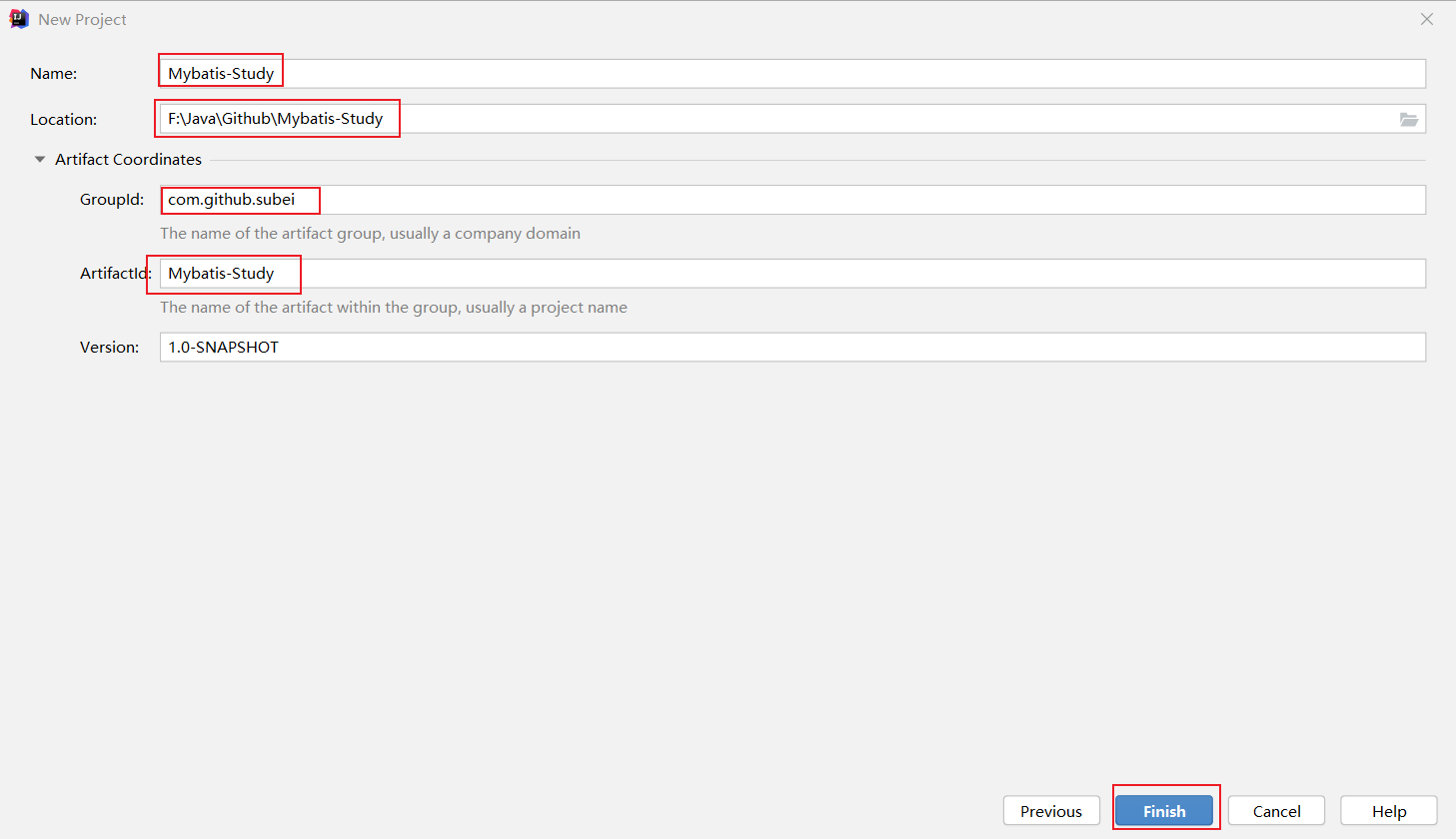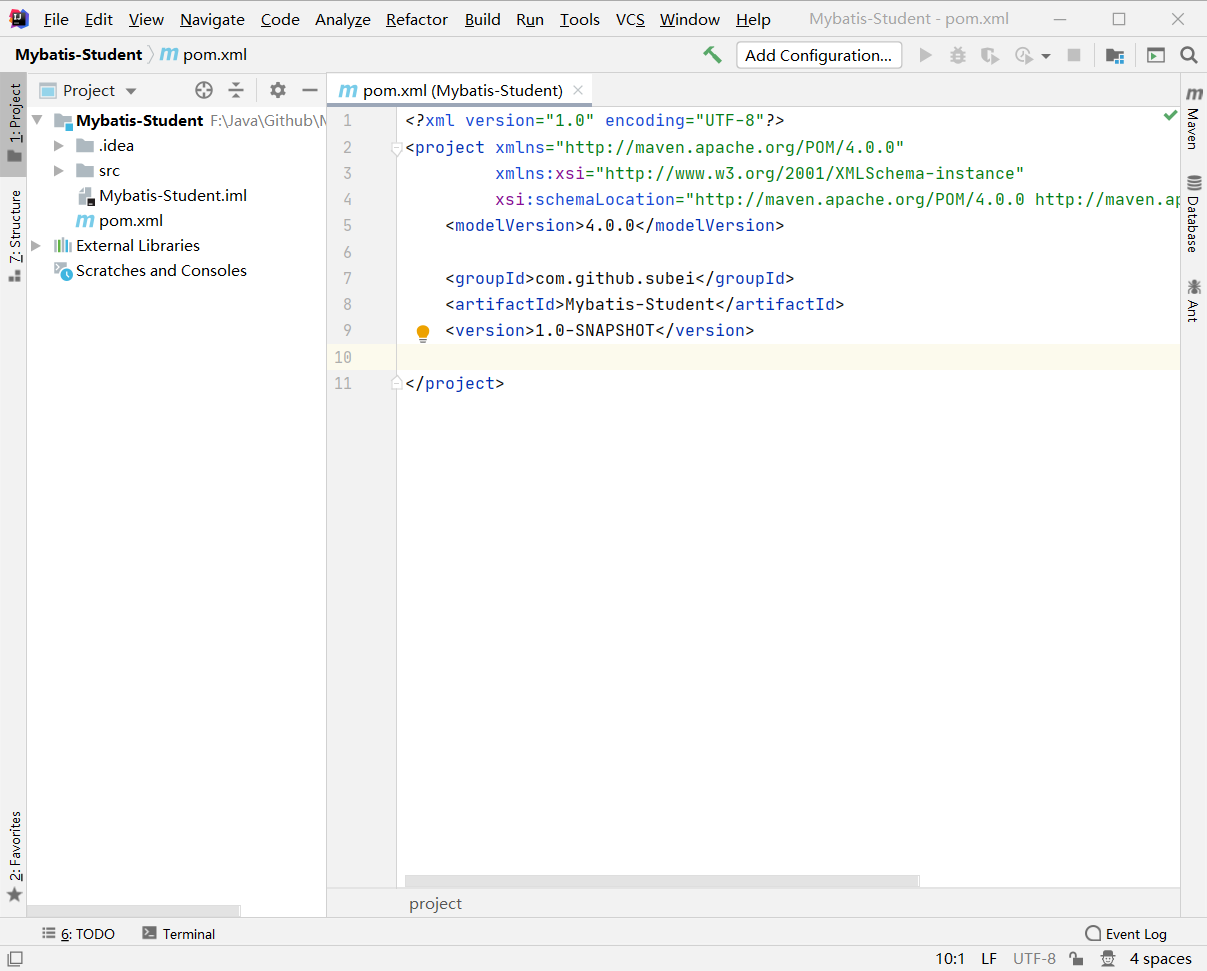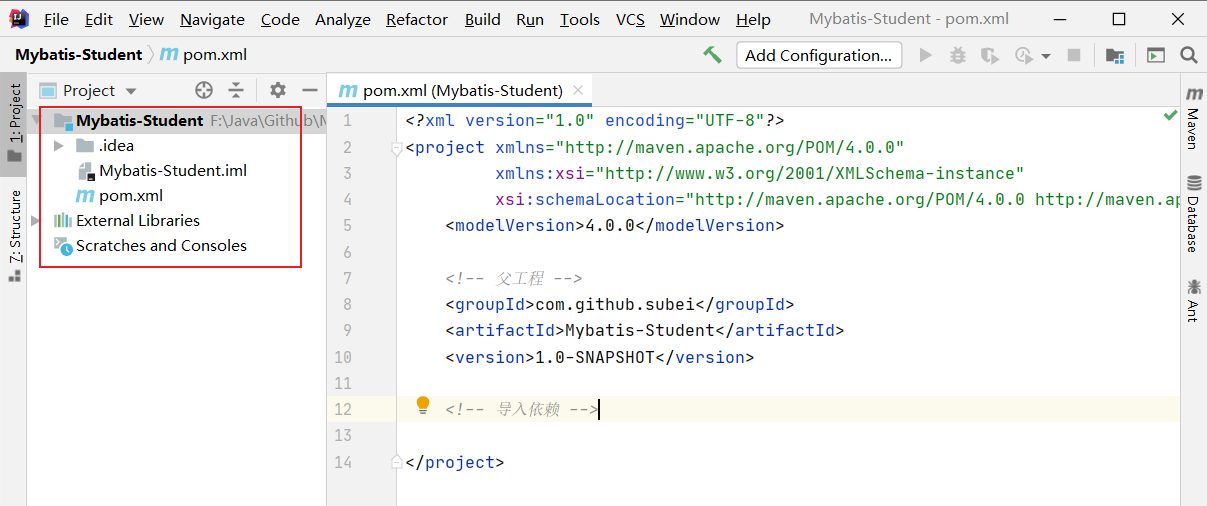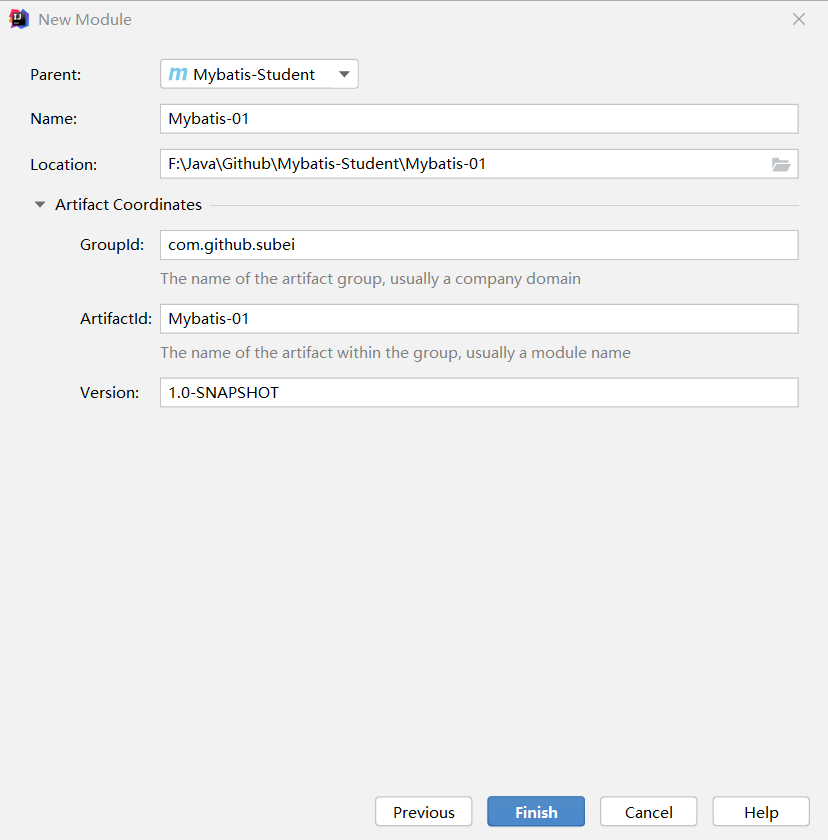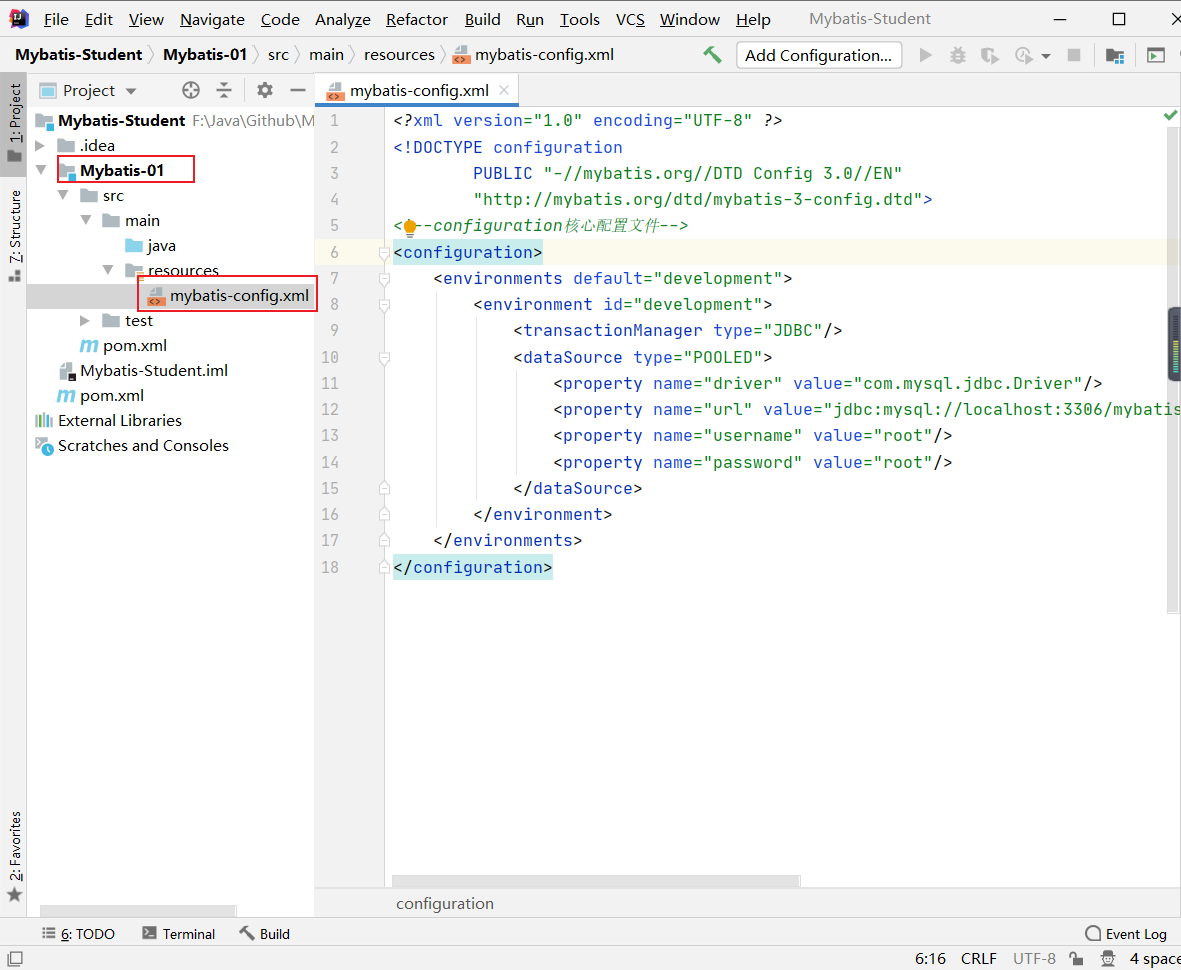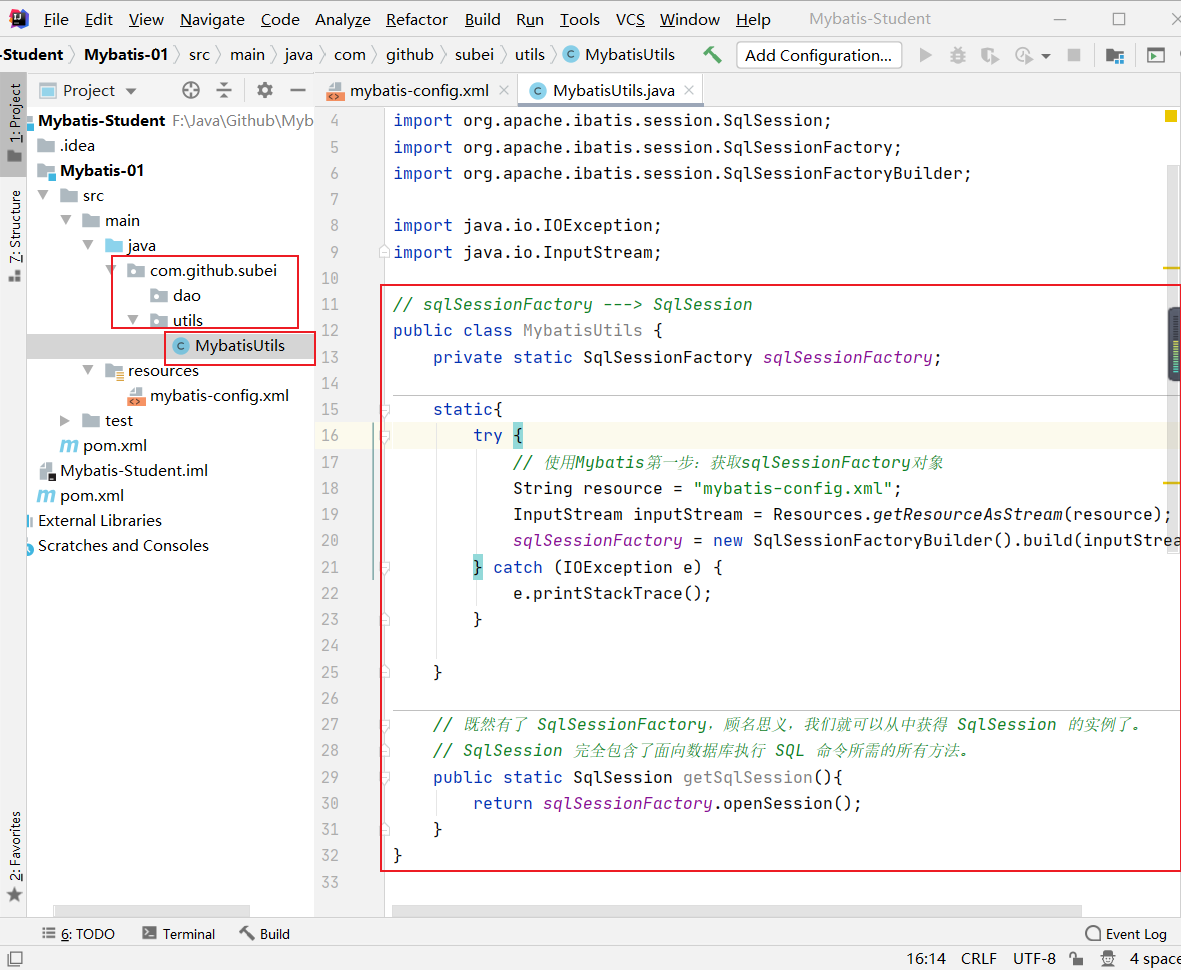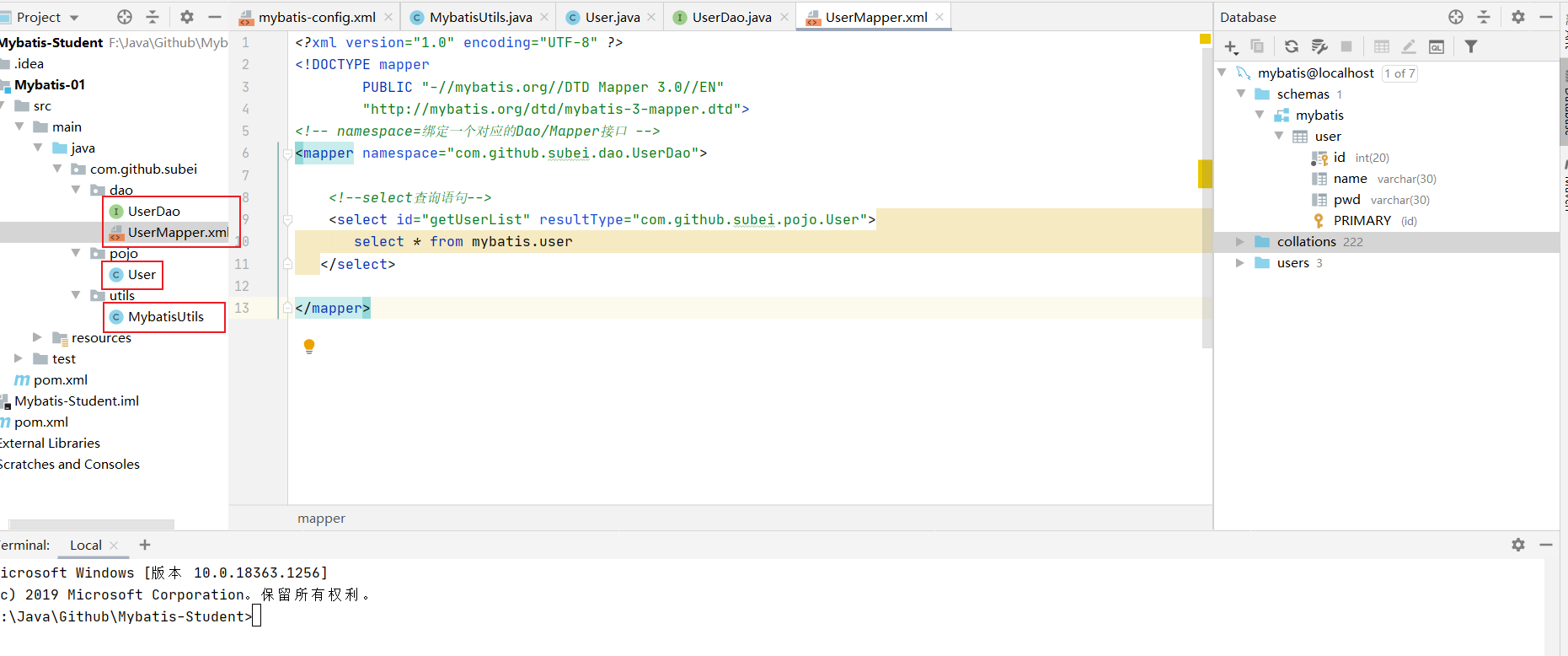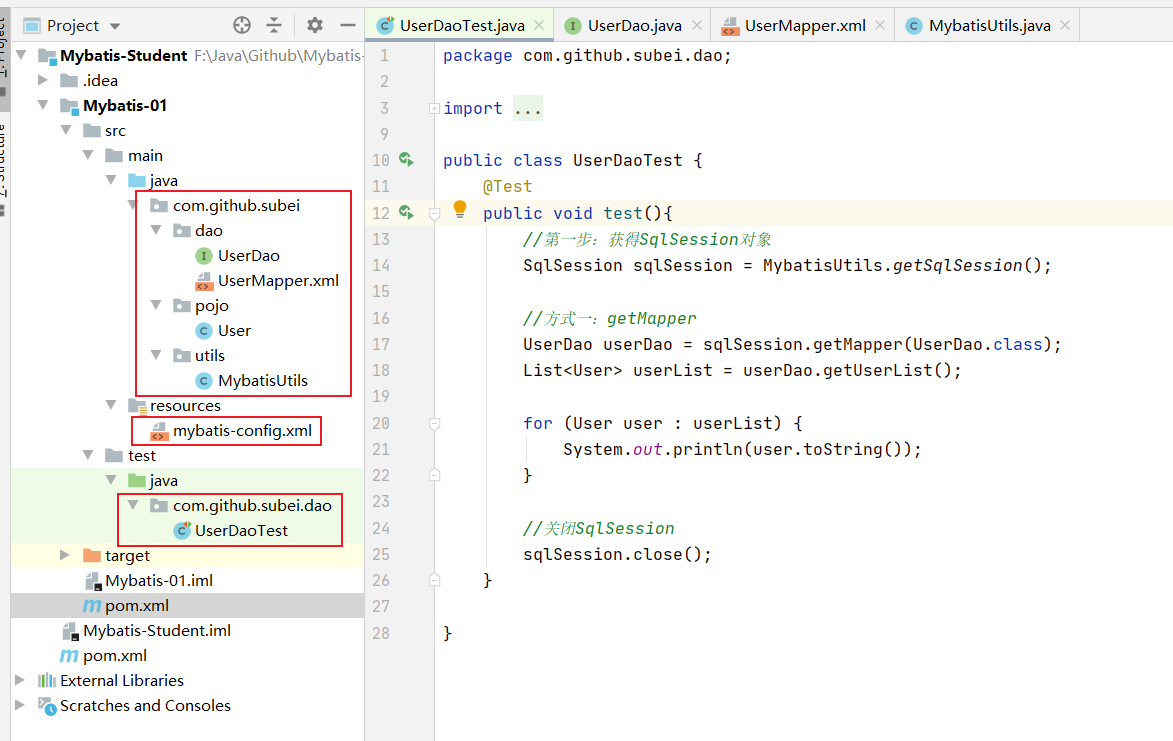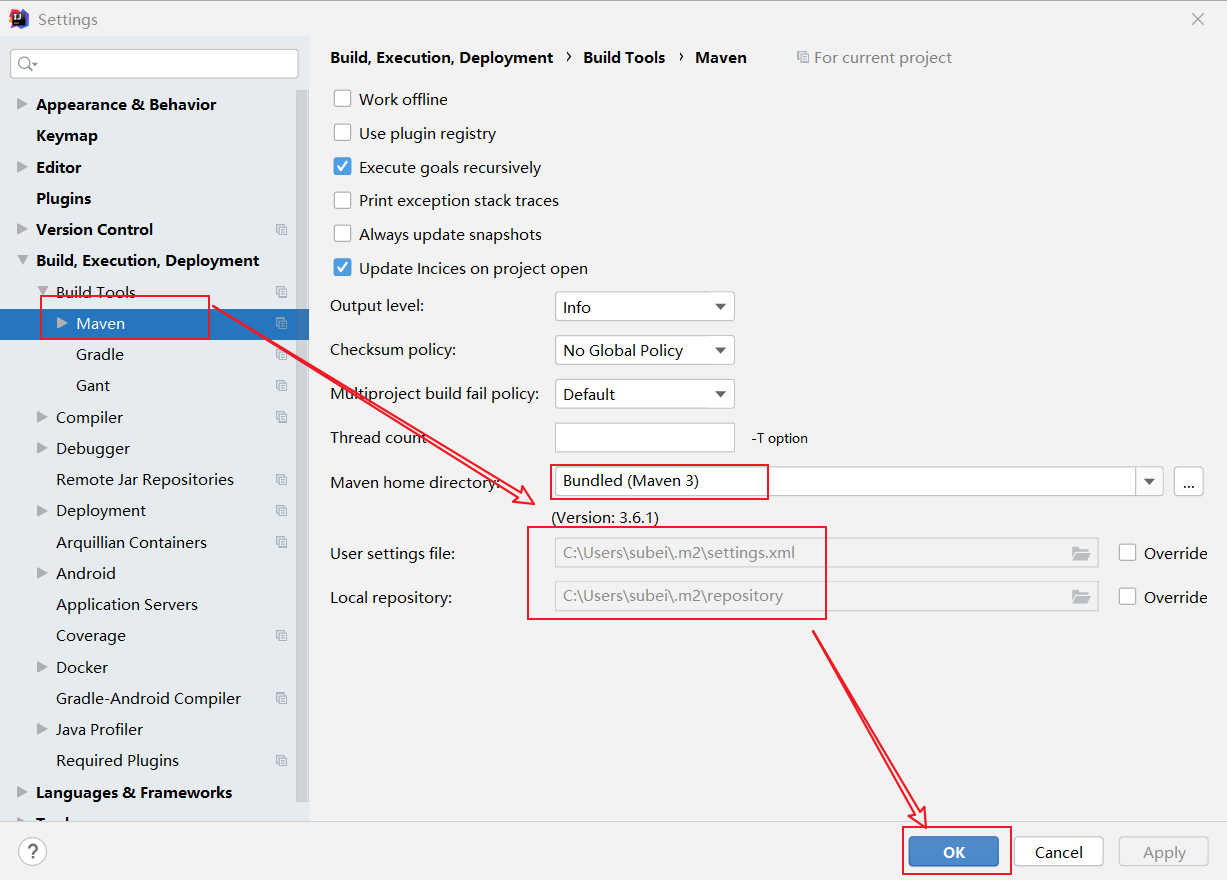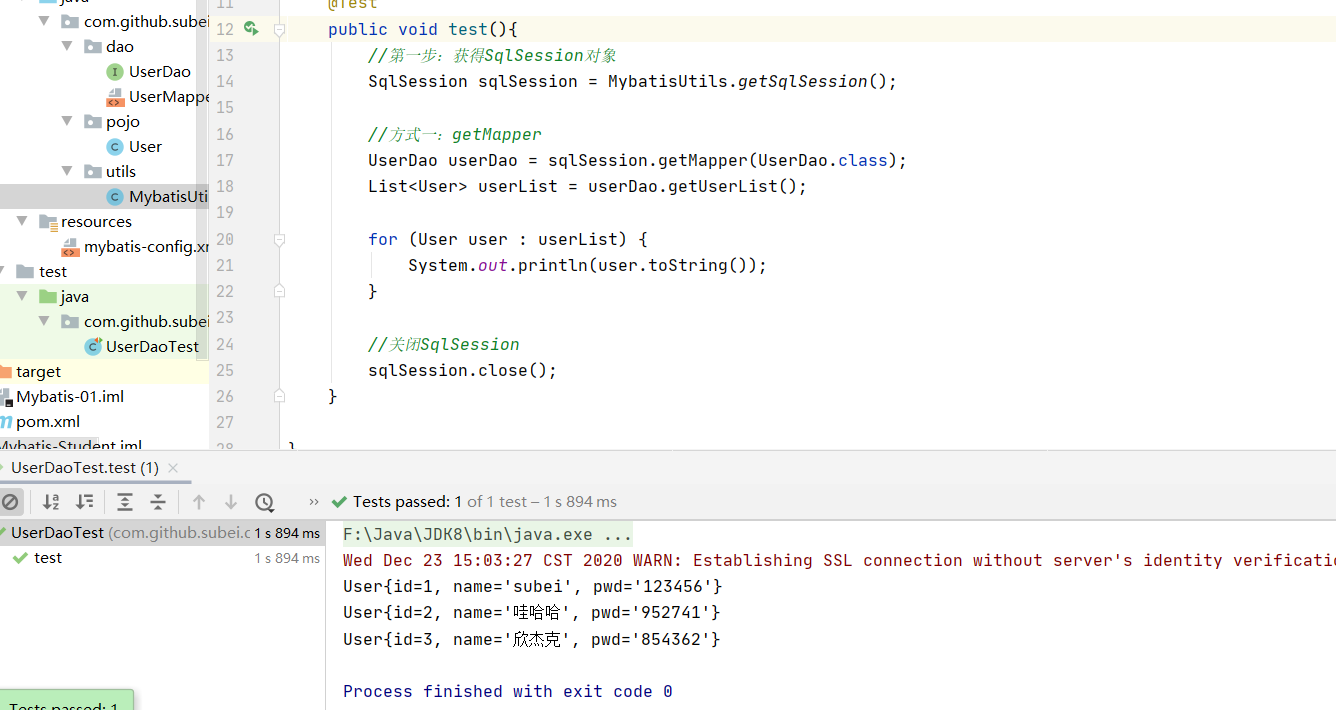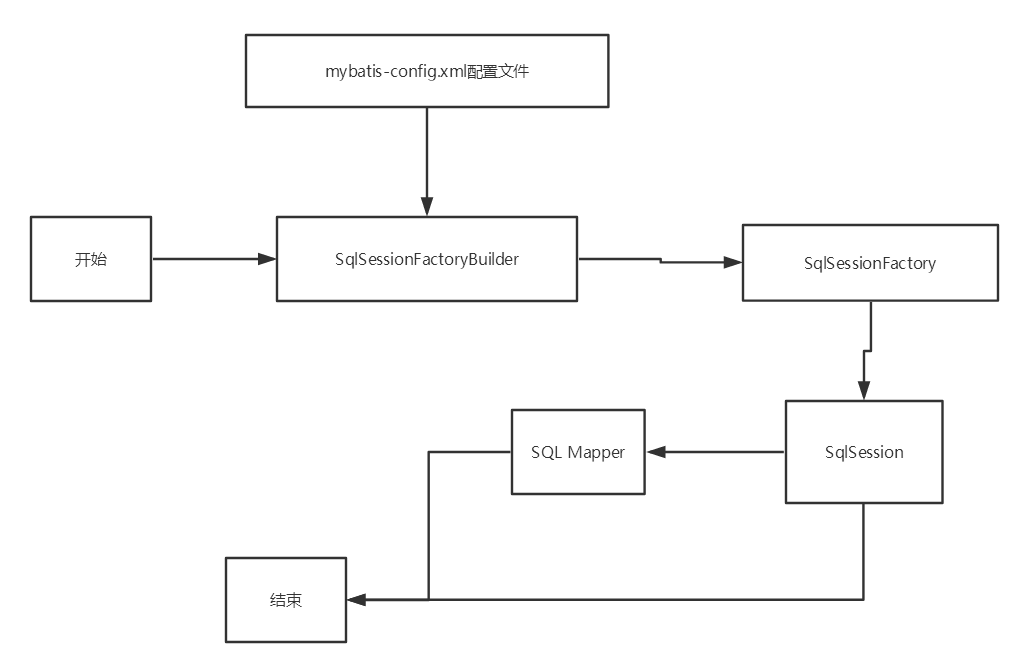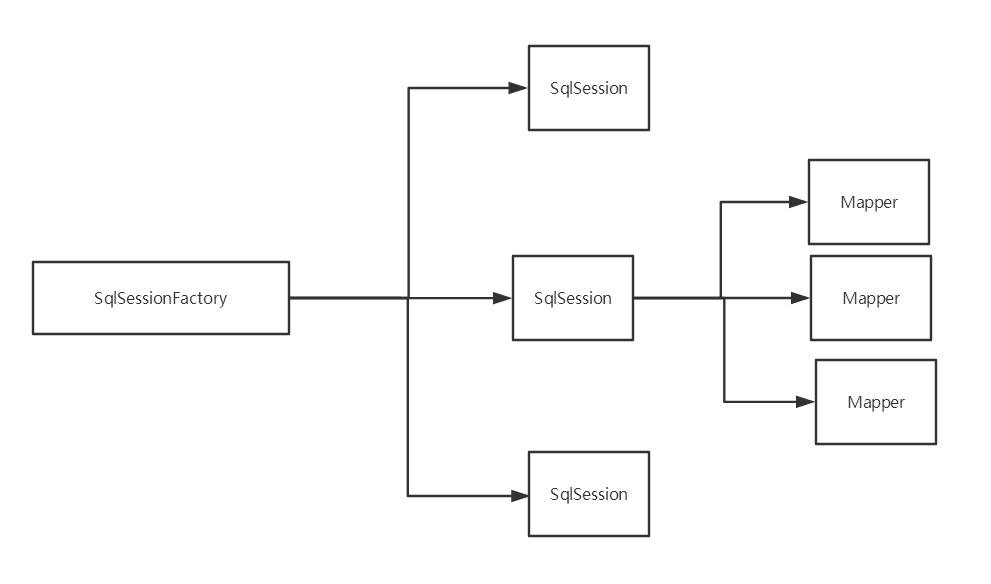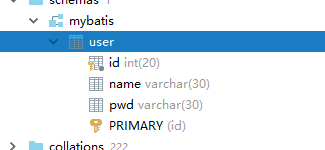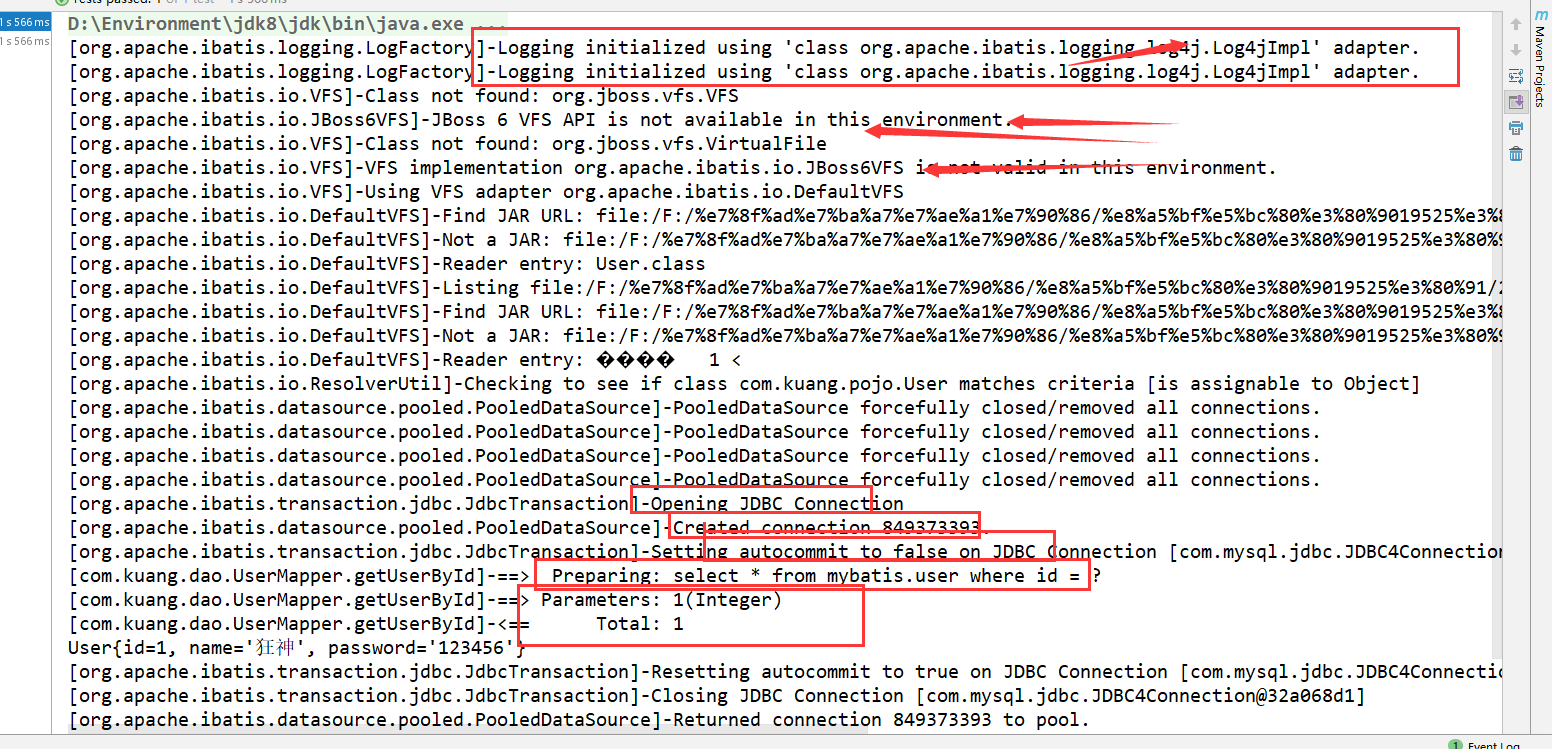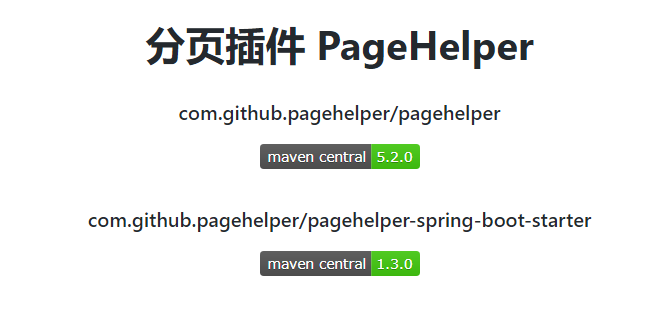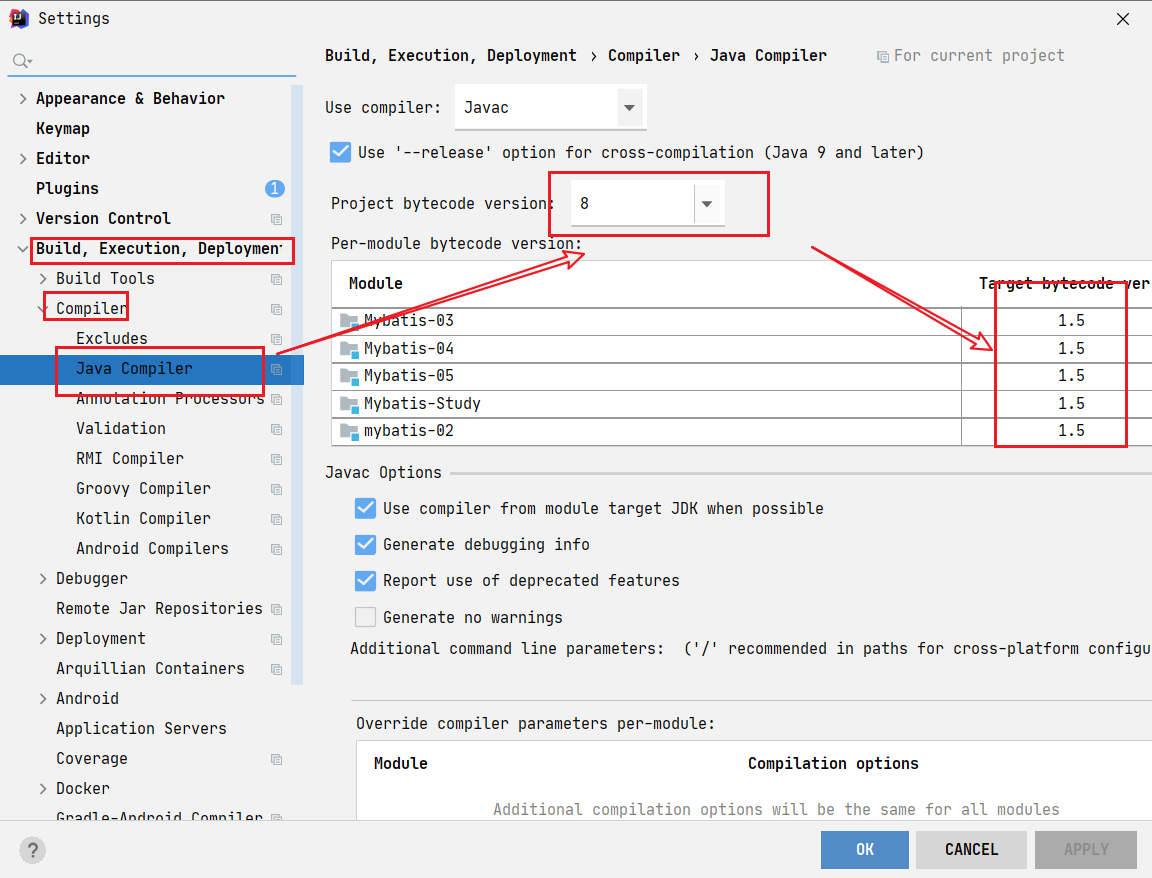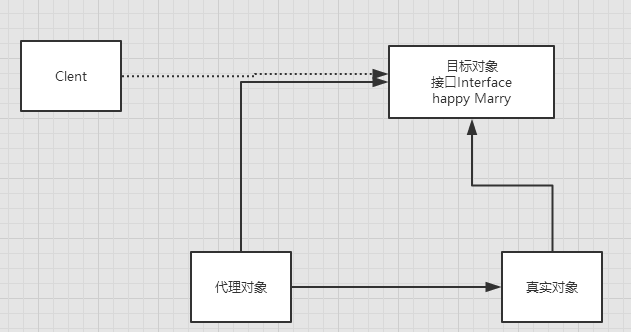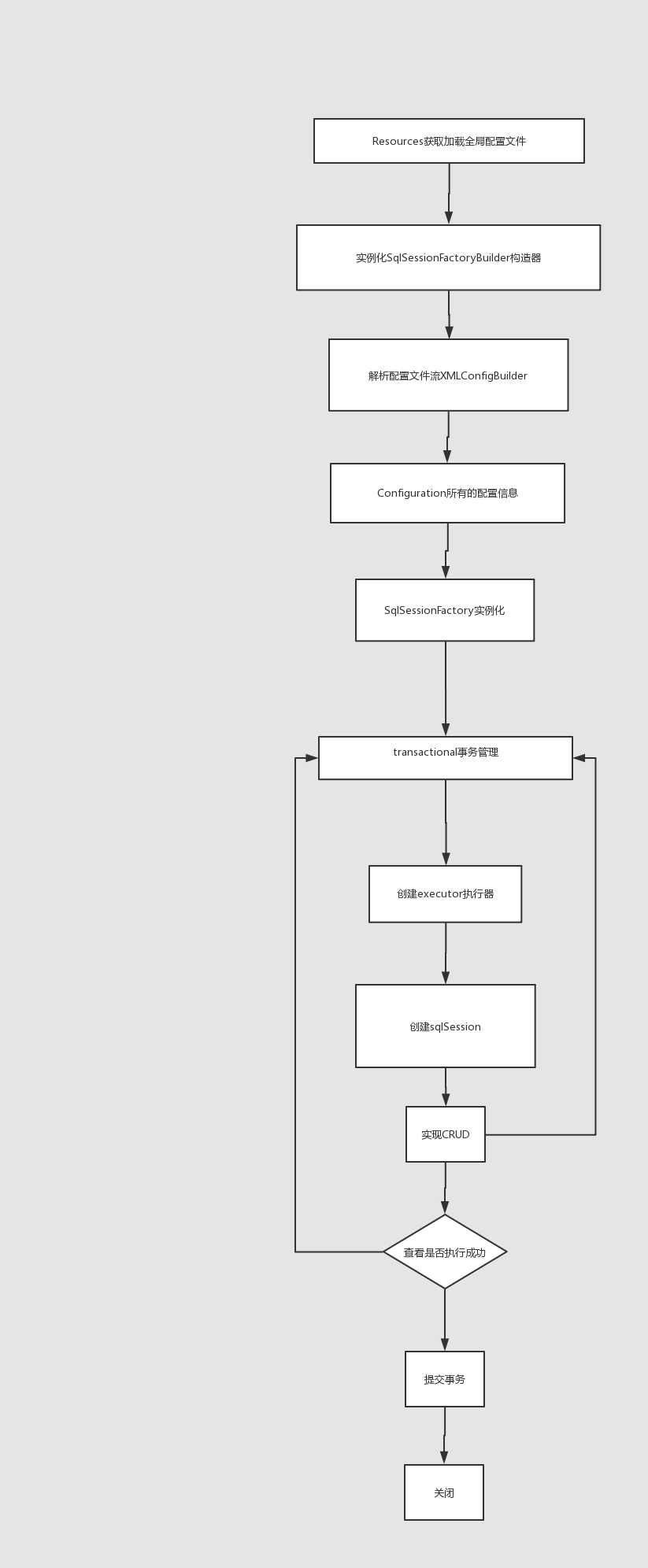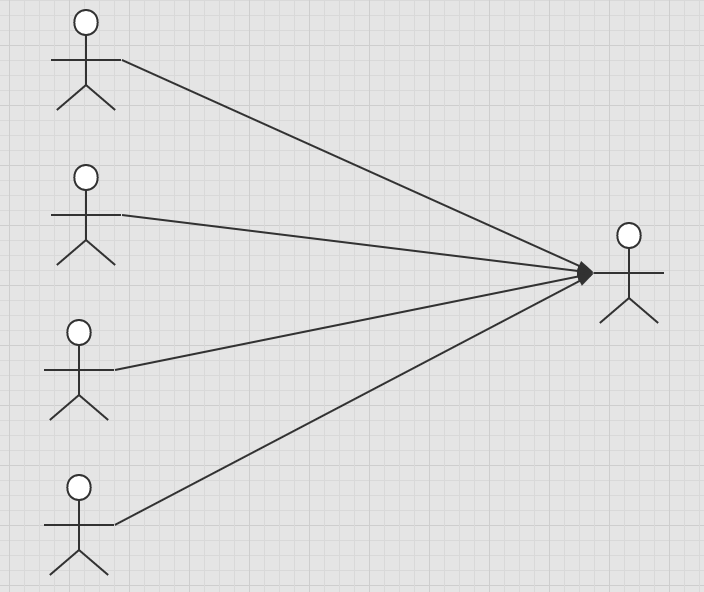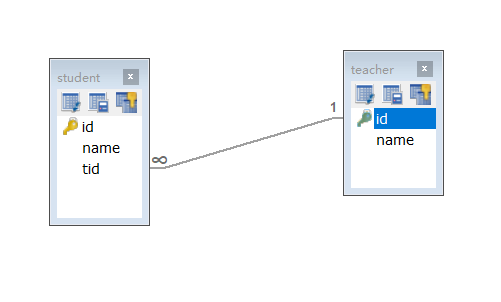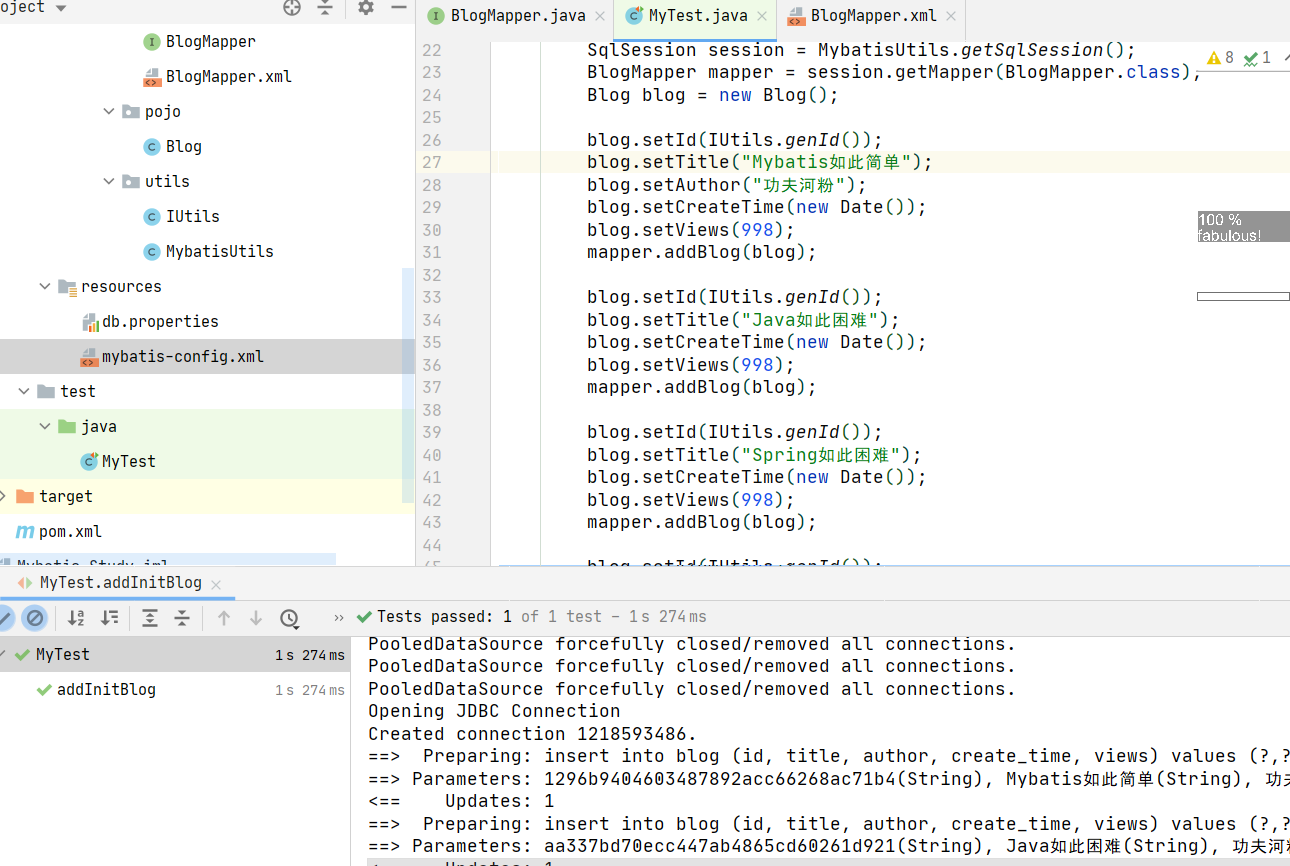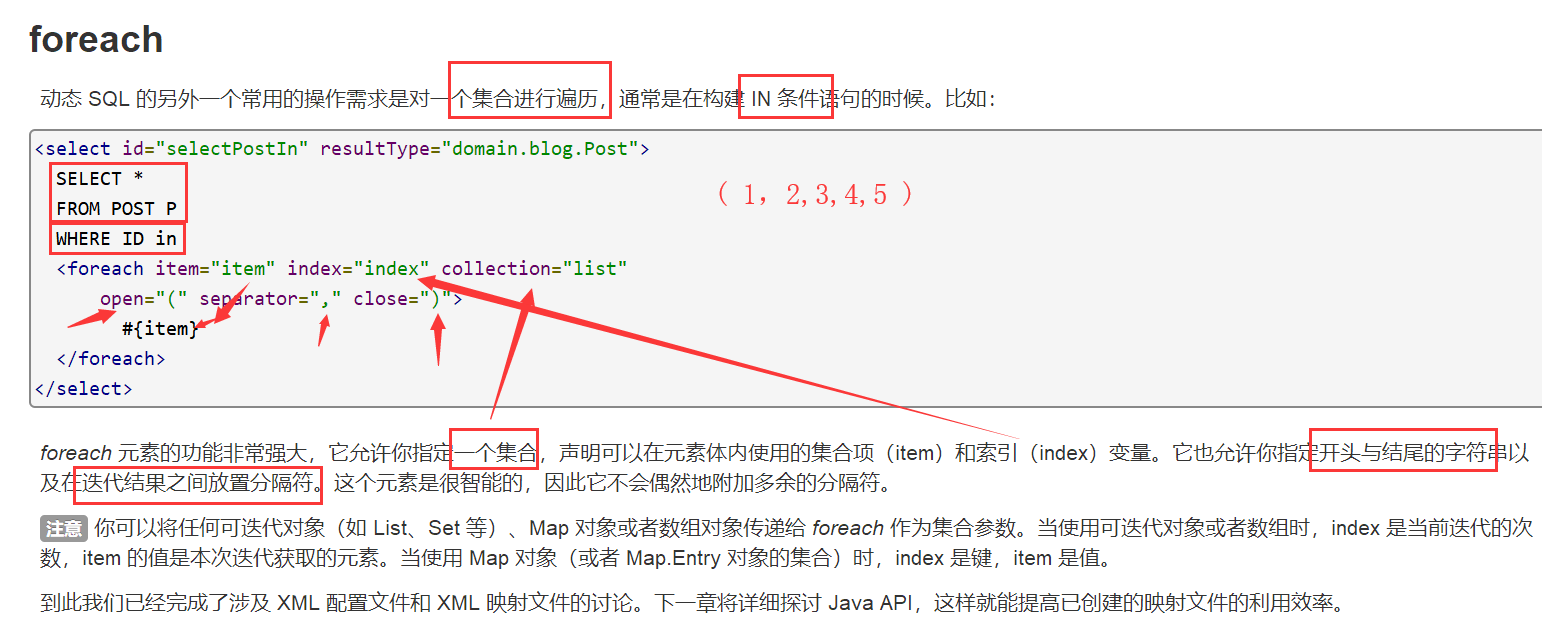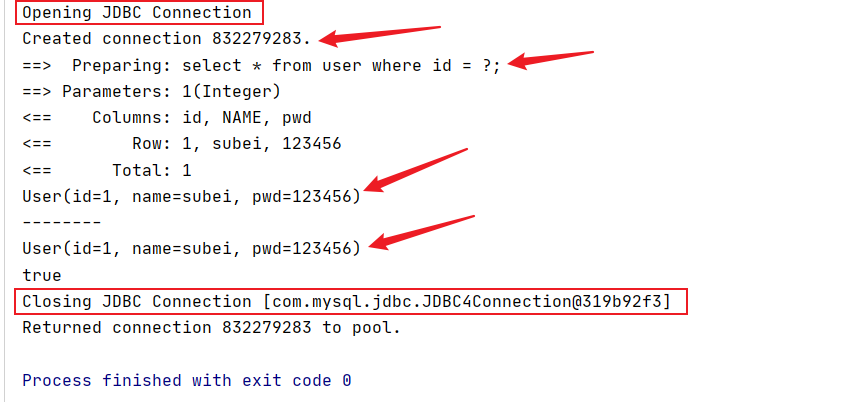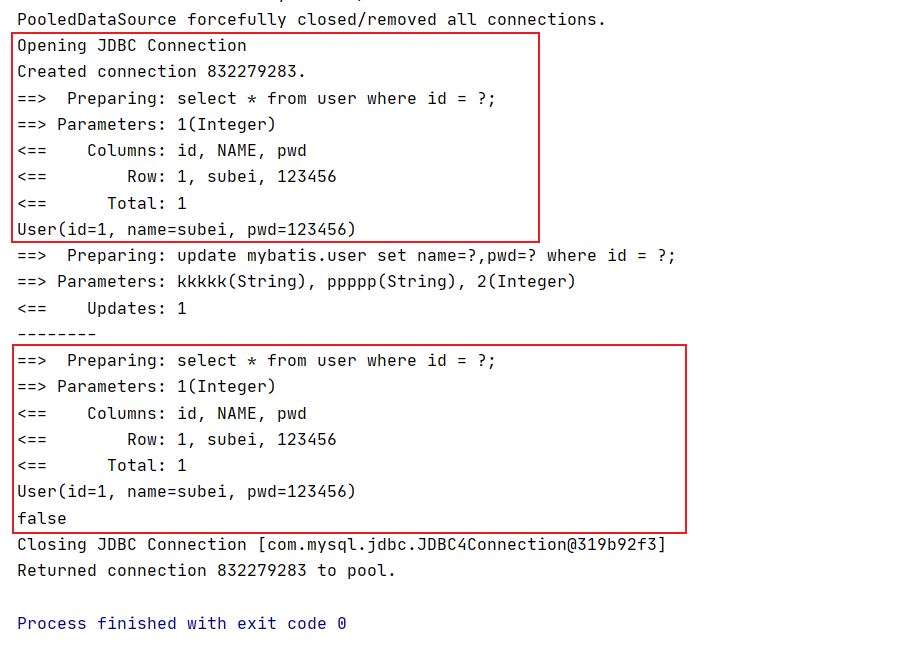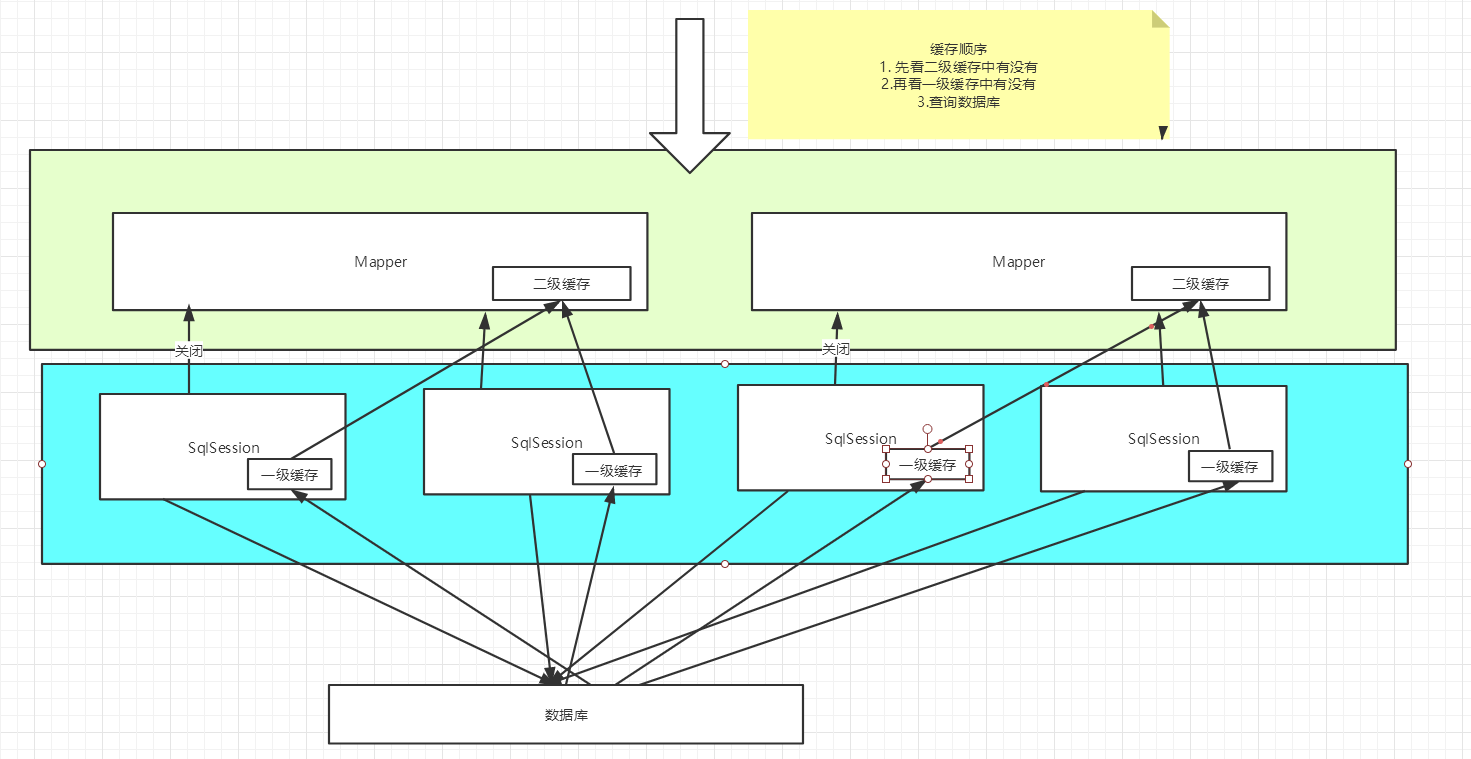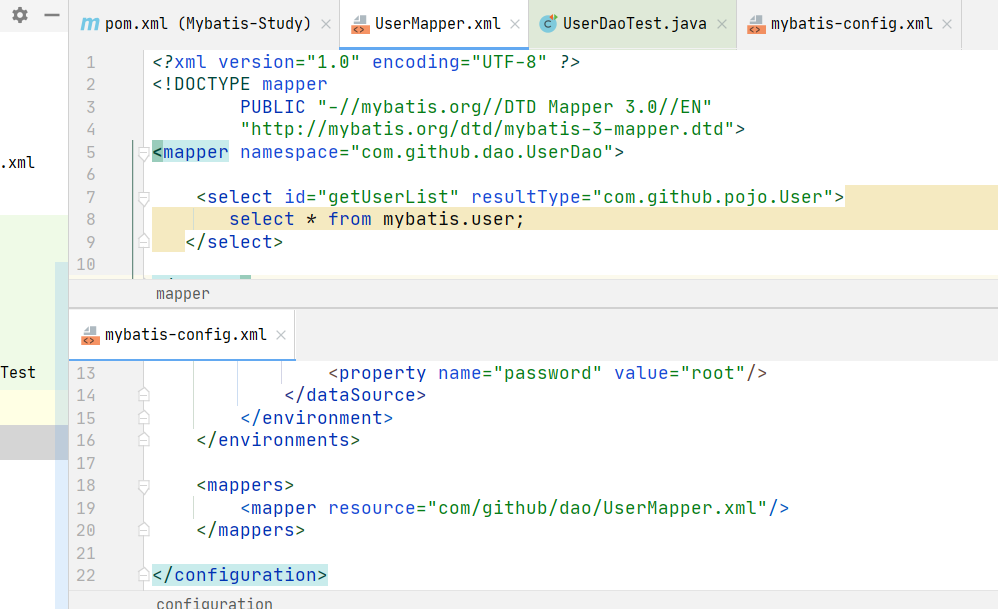Mybatis 环境:
JDK 1.8 Mysql 5.7 maven 3.6.3 IDEA 2020.2 SSM框架 :配置文件的。 最好的方式:看官网文档;
1、简介 1.1、什么是Mybatis
MyBatis 是一款优秀的持久层框架 它支持定制化 SQL、存储过程以及高级映射。 MyBatis 避免了几乎所有的 JDBC 代码和手动设置参数以及获取结果集。 MyBatis 可以使用简单的 XML 或注解来配置和映射原生类型、接口和 Java 的 POJO(Plain Old Java Objects,普通老式 Java 对象)为数据库中的记录。 MyBatis 本是apache 的一个开源项目iBatis , 2010年这个项目由apache software foundation 迁移到了google code,并且改名为MyBatis 。 2013年11月迁移到Github 。 如何获得Mybatis?
1.2、持久化 数据持久化:
持久化就是将程序的数据在持久状态和瞬时状态转化的过程。 内存:断电即失 。 数据库(Jdbc),io文件持久化。 联系于生活:冷藏、罐头。 为什么需要需要持久化?
有一些硬盘里的对象,不能让他丢掉!!!
内存太贵了。
1.3、持久层 Dao层,Service层,Controller层….
1.4 为什么需要Mybatis? 帮助程序猿将数据存入到数据库中。 方便 传统的JDBC代码太复杂了。简化。框架。自动化。 不用Mybatis也可以,更容易上手。 优点:简单易学。 灵活。 sql和代码的分离,提高了可维护性。 提供映射标签,支持对象与数据库的orm字段关系映射。 提供对象关系映射标签,支持对象关系组建维护。 提供xml标签,支持编写动态sql。 最重要的一点:使用的人多!
Mybatis学完后,学Spring —> SpringMVC —> SpringBoot
2、第一个Mybatis程序 思路:搭建环境–>导入Mybatis–>编写代码–>测试! 2.1、搭建环境 搭建数据库
1 2 3 4 5 6 7 8 9 10 11 CREATE DATABASE mybatis; USE mybatis; CREATE TABLE USER ( id INT ( 20 ) NOT NULL PRIMARY KEY, NAME VARCHAR ( 30 ) DEFAULT NULL, pwd VARCHAR ( 30 ) DEFAULT NULL ) ENGINE = INNODB DEFAULT charset = utf8; INSERT INTO USER ( id, NAME, pwd ) VALUES ( 1, 'test', '123456' ), ( 2, '哇哈哈', '952741' ), ( 3, '欣杰克', '854362' );
新建项目
新建一个普通的maven项目
删除src目录
导入maven依赖
1 2 3 4 5 6 7 8 9 10 11 12 13 14 15 16 17 18 19 20 21 <dependencies > <dependency > <groupId > mysql</groupId > <artifactId > mysql-connector-java</artifactId > <version > 5.1.47</version > </dependency > <dependency > <groupId > org.mybatis</groupId > <artifactId > mybatis</artifactId > <version > 3.5.2</version > </dependency > <dependency > <groupId > junit</groupId > <artifactId > junit</artifactId > <version > 4.12</version > </dependency > </dependencies >
2.2、创建一个模块 Mybatis 3.5.4 中文官方文档:https://www.yuque.com/nizhegechouloudetuboshu/library/zsd0mk
2.3、编写代码
2.4、测试
junit测试
1 2 3 4 5 6 7 8 9 10 11 12 13 14 15 16 17 18 19 20 21 22 23 24 25 26 27 28 29 30 31 32 package com.github.test.dao;import com.github.test.pojo.User;import com.github.test.utils.MybatisUtils;import org.apache.ibatis.session.SqlSession;import org.junit.Test;import java.util.List;public class UserDaoTest { @Test public void test () { SqlSession sqlSession = MybatisUtils.getSqlSession(); UserDao userDao = sqlSession.getMapper(UserDao.class); List<User> userList = userDao.getUserList(); for (User user : userList) { System.out.println(user); } sqlSession.close(); } }
可以能会遇到的问题:
配置文件没有注册 绑定接口错误。 方法名不对 返回类型不对 Maven导出资源问题 day01学习中遇到的报错 报错:error:java :程序包org.apache.ibatis.io不存在。:程序包org.apache.ibatis.session不存在
IDEA 2020.1版本报错,解决方法: 出现这个问题根本办法是修改一下maven home directory为Bundled (Maven 3),并修改为默认给的路径,不要用自己的maven本地仓库的路径,用idea 2020 内置的maven ,至于具体原因,可能是IDEA2020的新功能吧,但能解决!!! 第一步,修改maven地址:
如果还不行,参考这个解决:https://blog.csdn.net/bin_bujiangjiu/article/details/106727561
解决方法:在mybatis-config.xm文件中添加如下代码: 1 2 3 4 <mappers > <mapper resource ="com/github/test/dao/UserMapper.xml" /> </mappers >
MapperRegistry是什么?
解决方法:在最外层的pom.xml文件中,添加如下代码: 1 2 3 4 5 6 7 8 9 10 11 12 13 14 15 16 17 18 19 20 21 <build > <resources > <resource > <directory > src/main/resources</directory > <includes > <include > **/*.properties</include > <include > **/*.xml</include > </includes > <filtering > true</filtering > </resource > <resource > <directory > src/main/java</directory > <includes > <include > **/*.properties</include > <include > **/*.xml</include > </includes > <filtering > true</filtering > </resource > </resources > </build >
添加后,==如果还是报错,请删除所有.xml文件中的中文注释!==具体原因不明。
参考博文①:https://blog.csdn.net/bin_bujiangjiu/article/details/106784700
参考博客②:https://blog.csdn.net/bin_bujiangjiu/article/details/106727561
3、CRUD 1、namespace namespace中的包名要和 Dao/mapper 接口的包名一致! 2、select 选择,查询语句;
id : 就是对应的namespace中的方法名; resultType:Sql语句执行的返回值! parameterType : 参数类型! 编写接口
1 2 User getUserById (int id) ;
编写对应的mapper中的sql语句
1 2 3 <select id="getUserById" parameterType="int" resultType="com.github.test.pojo.User" > select * from mybatis.user where id = #{id}; </select>
测试
1 2 3 4 5 6 7 8 9 10 11 12 13 @Test public void getUserById () { SqlSession sqlSession = MybatisUtils.getSqlSession(); UserMapper mapper = sqlSession.getMapper(UserMapper.class); User user = mapper.getUserById(1 ); System.out.println(user); sqlSession.close(); }
3、Insert 编写接口 1 2 int addUser (User user) ;
编写对应的mapper中的sql语句 1 2 3 4 <insert id ="addUser" parameterType ="com.github.test.pojo.User" > insert into mybatis.user (id, name, pwd) values (#{id},#{name},#{pwd}); </insert >
测试 1 2 3 4 5 6 7 8 9 10 11 12 13 14 15 16 17 18 19 @Test public void addUser () { SqlSession sqlSession = MybatisUtils.getSqlSession(); UserMapper mapper = sqlSession.getMapper(UserMapper.class); int res = mapper.addUser(new User (4 ,"好多鱼" ,"421563" )); if (res>0 ){ System.out.println("插入成功!!" ); } sqlSession.commit(); sqlSession.close(); }
4、update 1 2 3 4 5 6 7 8 9 10 11 12 13 14 15 16 17 18 19 20 21 22 23 24 25 26 27 int updateUser (User user) ;<update id="updateUser" parameterType="com.github.test.pojo.User" > update mybatis.user set name=#{name},pwd=#{pwd} where id = #{id}; </update> @Test public void updateUser () { SqlSession sqlSession = MybatisUtils.getSqlSession(); UserMapper mapper = sqlSession.getMapper(UserMapper.class); int res = mapper.updateUser(new User (4 ,"好多鱼" ,"233333" )); if (res>0 ){ System.out.println("上传成功!!" ); } sqlSession.commit(); sqlSession.close(); }
5、Delete 1 2 3 4 5 6 7 8 9 10 11 12 13 14 15 16 17 18 19 20 21 22 23 24 25 26 27 int deleteUser (int id) ;<delete id="deleteUser" parameterType="int" > delete from mybatis.user where id = #{id}; </delete> @Test public void deleteUser () { SqlSession sqlSession = MybatisUtils.getSqlSession(); UserMapper mapper = sqlSession.getMapper(UserMapper.class); int res = mapper.deleteUser(4 ); if (res>0 ){ System.out.println("删除成功!!" ); } sqlSession.commit(); sqlSession.close(); }
注意点:
6、分析错误 标签不要匹配错 resource 绑定mapper,需要使用路径! 程序配置文件必须符合规范! NullPointerException,没有注册到资源! 输出的xml文件中存在中文乱码问题! maven资源没有导出问题! 7、万能Map 假设,我们的实体类,或者数据库中的表,字段或者参数过多,我们应当考虑使用Map!
1 2 int addUser2 (Map<String,Object> map) ;
1 2 3 4 <insert id ="addUser2" parameterType ="map" > insert into mybatis.user (id, pwd) values (#{userid},#{passWord}); </insert >
1 2 3 4 5 6 7 8 9 10 11 12 13 14 15 16 17 @Test public void addUser2 () { SqlSession sqlSession = MybatisUtils.getSqlSession(); UserMapper mapper = sqlSession.getMapper(UserMapper.class); Map<String, Object> map = new HashMap <String, Object>(); map.put("userid" ,5 ); map.put("passWord" ,"2222333" ); mapper.addUser2(map); sqlSession.close(); }
Map传递参数,直接在sql中取出key即可! 【parameterType=”map”】 对象传递参数,直接在sql中取对象的属性即可!【parameterType=”Object”】 只有一个基本类型参数的情况下,可以直接在sql中取到! 多个参数用Map,或者注解! 8、思考题 模糊查询怎么写?这是两种方式:
Java代码执行的时候,传递通配符 % %
1 2 3 4 5 6 7 8 9 10 11 12 13 14 15 16 17 18 19 20 21 22 23 24 List<User> getUserLike (String value) ; <select id="getUserLike" resultType="com.github.test.pojo.User" > select * from mybatis.user where name like #{value }; </select> @Test public void getUserLike () { SqlSession sqlSession = MybatisUtils.getSqlSession(); UserMapper mapper = sqlSession.getMapper(UserMapper.class); List<User> userList = mapper.getUserLike("%欣%" ); for (User user:userList){ System.out.println(user); } sqlSession.close(); }
在sql拼接中使用通配符!
1 select * from mybatis.user where name like "%" #{value}"%"
4、配置解析 1、核心配置文件 2、环境配置(environments) 3、属性(properties) 我们可以通过properties属性来实现引用配置文件
这些属性都是可外部配置且可动态替换的,既可以在典型的 Java 属性文件中配置,亦可通过 properties 元素的子元素来传递。【db.properties】
1 2 3 4 driver =com.mysql.jdbc.Driver url =jdbc:mysql://localhost:3306/mybatis?useSSL=true&serverTimezone=UTC&useUnicode=true&characterEncoding=utf8 username =root password =root
1 2 3 4 5 6 7 8 9 10 11 12 13 14 15 16 17 18 19 20 21 22 23 24 25 26 27 28 29 30 31 32 33 <?xml version="1.0" encoding="UTF-8" ?> <!DOCTYPE configuration PUBLIC "-//mybatis.org//DTD Config 3.0//EN" "http://mybatis.org/dtd/mybatis-3-config.dtd" > <configuration > <properties resource ="db.properties" > <property name ="username" value ="root" /> <property name ="pwd" value ="root" /> </properties > <environments default ="development" > <environment id ="development" > <transactionManager type ="JDBC" /> <dataSource type ="POOLED" > <property name ="driver" value ="${driver}" /> <property name ="url" value ="${url}" /> <property name ="username" value ="${username}" /> <property name ="password" value ="${pwd}" /> </dataSource > </environment > </environments > <mappers > <mapper resource ="com/github/test/dao/UserMapper.xml" /> </mappers > </configuration >
可以直接引入外部文件; 可以在其中增加一些属性配置; 如果两个文件有同一个字段,优先使用外部配置文件的! 4、类型别名(typeAliases) 类型别名是为 Java 类型设置一个短的名字。 存在的意义仅在于用来减少类完全限定名的冗余。
1 2 3 4 <typeAliases > <typeAlias type ="com.github.test.pojo.User" alias ="User" /> </typeAliases >
1 2 3 4 <typeAliases > <package name ="com.github.test.pojo" /> </typeAliases >
在实体类比较少的时候,使用第一种方式。
如果实体类十分多,建议使用第二种。
第一种可以DIY别名,第二种则不行,如果非要改,需要在实体上增加注解。
1 2 @Alias("user") public class User {}
5、设置 这是 MyBatis 中极为重要的调整设置,它们会改变 MyBatis 的运行时行为。
6、其他配置 7、映射器(mappers) MapperRegistry:注册绑定我们的Mapper文件;
1 2 3 4 <mappers > <mapper resource ="com/github/test/dao/UserMapper.xml" /> </mappers >
1 2 3 4 <mappers > <mapper class ="com.github.test.dao.UserMapper" /> </mappers >
注意点:
接口和他的Mapper配置文件必须同名! 接口和他的Mapper配置文件必须在同一个包下! 1 2 3 4 <mappers > <package name ="com.github.test.dao" /> </mappers >
注意点:
接口和他的Mapper配置文件必须同名! 接口和他的Mapper配置文件必须在同一个包下! 练习时间:
将数据库配置文件外部引入; 实体类别名; 保证UserMapper 接口 和 UserMapper .xml 改为一致!并且放在同一个包下! 8、生命周期和作用域
生命周期,和作用域,是至关重要的,因为错误的使用会导致非常严重的并发问题 。
SqlSessionFactoryBuilder:
一旦创建了 SqlSessionFactory,就不再需要它了。 局部变量。 SqlSessionFactory:
说白了就是可以想象为 :数据库连接池; SqlSessionFactory 一旦被创建就应该在应用的运行期间一直存在,没有任何理由丢弃它或重新创建另一个实例。 因此 SqlSessionFactory 的最佳作用域是应用作用域。 最简单的就是使用单例模式 或者静态单例模式。 SqlSession
连接到连接池的一个请求! SqlSession 的实例不是线程安全的,因此是不能被共享的,所以它的最佳的作用域是请求或方法作用域。 用完之后需要赶紧关闭,否则资源被占用!
这里面的每一个Mapper,就代表一个具体的业务!
5、解决属性名和字段名不一致的问题 1、 问题
新建一个项目,拷贝之前的,测试实体类字段不一致的情况: 1 2 3 4 5 6 7 8 9 10 11 12 13 14 15 16 17 18 19 20 21 22 23 24 25 26 27 28 29 30 31 32 33 34 35 36 37 38 39 40 41 42 43 44 45 46 47 48 49 50 package com.github.test.pojo;public class User { private int id; private String name; private String password; public User () { } public int getId () { return id; } public void setId (int id) { this .id = id; } public String getName () { return name; } public void setName (String name) { this .name = name; } public String getPassword () { return password; } public void setPassword (String password) { this .password = password; } public User (int id, String name, String password) { this .id = id; this .name = name; this .password = password; } @Override public String toString () { return "User{" + "id=" + id + ", name='" + name + '\'' + ", password='" + password + '\'' + '}' ; } }
1 2 3 // select * from mybatis.user where id = #{id} // 类型处理器 // select id,name,pwd from mybatis.user where id = #{id}
解决方法:
起别名
1 2 3 <select id ="getUserById" resultType ="com.kuang.pojo.User" > select id,name,pwd as password from mybatis.user where id = #{id} </select >
2、resultMap 1 2 id name pwd id name password
1 2 3 4 5 6 7 8 9 10 11 <resultMap id ="userMap" type ="User" > <result column ="id" property ="id" /> <result column ="name" property ="name" /> <result column ="pwd" property ="password" /> </resultMap > <select id ="getUserById" parameterType ="int" resultMap ="userMap" > select id,name,pwd from mybatis.user where id = #{id}; </select >
resultMap 元素是 MyBatis 中最重要最强大的元素。ResultMap 的设计思想是,对于简单的语句根本不需要配置显式的结果映射,而对于复杂一点的语句只需要描述它们的关系就行了。 ResultMap 最优秀的地方在于,虽然你已经对它相当了解了,但是根本就不需要显式地用到他们。6、日志 6.1、日志工厂 如果一个数据库操作,出现了异常,我们需要排错。日志就是最好的助手!
SLF4J
LOG4J 【掌握】
LOG4J2
JDK_LOGGING
COMMONS_LOGGING
STDOUT_LOGGING 【掌握】
NO_LOGGING
1 2 3 <settings > <setting name ="logImpl" value ="STDOUT_LOGGING" /> </settings >
6.2、Log4j 什么是Log4j?
Log4j是Apache 的一个开源项目,通过使用Log4j,我们可以控制日志信息输送的目的地是控制台 、文件、GUI 组件 我们也可以控制每一条日志的输出格式; 通过定义每一条日志信息的级别,我们能够更加细致地控制日志的生成过程。 通过一个配置文件 来灵活地进行配置,而不需要修改应用的代码。
先导入log4j的包
1 2 3 4 5 6 7 8 <dependencies > <dependency > <groupId > log4j</groupId > <artifactId > log4j</artifactId > <version > 1.2.17</version > </dependency > </dependencies >
log4j.properties
1 2 3 4 5 6 7 8 9 10 11 12 13 14 15 16 17 18 19 20 21 22 23 24 log4j.rootLogger =DEBUG,console,file log4j.appender.console = org.apache.log4j.ConsoleAppender log4j.appender.console.Target = System.out log4j.appender.console.Threshold =DEBUG log4j.appender.console.layout = org.apache.log4j.PatternLayout log4j.appender.console.layout.ConversionPattern =[%c]-%m%n log4j.appender.file = org.apache.log4j.RollingFileAppender log4j.appender.file.File =./log/github.log log4j.appender.file.MaxFileSize =10mb log4j.appender.file.Threshold =DEBUG log4j.appender.file.layout =org.apache.log4j.PatternLayout log4j.appender.file.layout.ConversionPattern =[%p][%d{yy-MM-dd}][%c]%m%n log4j.logger.org.mybatis =DEBUG log4j.logger.java.sql =DEBUG log4j.logger.java.sql.Statement =DEBUG log4j.logger.java.sql.ResultSet =DEBUG log4j.logger.java.sql.PreparedStatement =DEBUG
配置log4j为日志的实现
1 2 3 4 5 6 7 8 9 <settings > <setting name ="logImpl" value ="" /> </settings > <settings > <setting name ="logImpl" value ="LOG4J" /> </settings >
Log4j的使用!,直接测试运行刚才的查询
简单使用
在要使用Log4j 的类中,导入包 import org.apache.log4j.Logger;
日志对象,参数为当前类的class;
1 static Logger logger = Logger.getLogger(UserDaoTest.class);
日志级别;
1 2 3 4 5 6 @Test public void testLog4j () { logger.info("info:进入了testLog4j" ); logger.debug("debug:进入了testLog4j" ); logger.error("error:进入了testLog4j" ); }
7、分页 思考:为什么要分页?
7.1、使用Limit分页 1 2 语法: SELECT * from user limit startIndex,pageSize; SELECT * from user limit 3 ; #[0 ,n]
使用Mybatis实现分页,核心SQL。
接口;
1 2 List<User> getUserByLimit (Map<String,Integer> map) ;
Mapper.xml;
1 2 3 4 <select id ="getUserByLimit" parameterType ="map" resultMap ="userMap" > select * from mybatis.user limit #{startIndex},#{pageSize} </select >
测试;
1 2 3 4 5 6 7 8 9 10 11 12 13 14 15 16 17 @Test public void getUserByLimit () {SqlSession sqlSession = MybatisUtils.getSqlSession();UserMapper mapper = sqlSession.getMapper(UserMapper.class);HashMap<String, Integer> map = new HashMap <String, Integer>(); map.put("startIndex" ,1 ); map.put("pageSize" ,2 ); List<User> userList = mapper.getUserByLimit(map); for (User user : userList) { System.out.println(user); } sqlSession.close(); }
7.2、RowBounds分页 不再使用SQL实现分页。
接口;
1 2 List<User> getUserByRowBounds () ;
mapper.xml;
1 2 3 4 <select id ="getUserByRowBounds" resultMap ="userMap" > select * from mybatis.user </select >
测试;
1 2 3 4 5 6 7 8 9 10 11 12 13 14 15 16 @Test public void getUserByRowBounds () { SqlSession sqlSession = MybatisUtils.getSqlSession(); RowBounds rowBounds = new RowBounds (1 , 2 ); List<User> userList = sqlSession.selectList("com.github.test.dao.UserMapper.getUserByRowBounds" ,null ,rowBounds); for (User user : userList) { System.out.println(user); } sqlSession.close(); }
7.3、分页插件 地址:https://mybatis.io/
了解即可,万一以后公司的架构师,说要使用,你需要知道它是什么东西!
关于IDEA自动重置LanguageLevel和JavaCompiler版本的问题 使用IDEA时,导入的Maven项目默认的LanguageLevel和JavaCompiler都是1.5,1.5的情况下连最简单的@Override注解都不支持,所以项目可能出现一堆错。
如果遇到这类问题,手动次次修改会很麻烦;只需在最外层的pom.xml文件中加入如下: 1 2 3 4 5 6 7 8 9 10 11 12 13 <build > <plugins > <plugin > <groupId > org.apache.maven.plugins</groupId > <artifactId > maven-compiler-plugin</artifactId > <version > 2.3.2</version > <configuration > <source > 1.8</source > <target > 1.8</target > </configuration > </plugin > </plugins > </build >
8、使用注解开发 8.1、面向接口编程 大家之前都学过面向对象编程,也学习过接口,但在真正的开发中,很多时候我们会选择面向接口编程。
根本原因 : ==解耦== , 可拓展 , 提高复用 , 分层开发中 , 上层不用管具体的实现 , 大家都遵守共同的标准 , 使得开发变得容易 , 规范性更好 在一个面向对象的系统中,系统的各种功能是由许许多多的不同对象协作完成的。在这种情况下,各个对象内部是如何实现自己的,对系统设计人员来讲就不那么重要了; 而各个对象之间的协作关系则成为系统设计的关键。小到不同类之间的通信,大到各模块之间的交互,在系统设计之初都是要着重考虑的,这也是系统设计的主要工作内容。面向接口编程就是指按照这种思想来编程。 关于接口的理解
接口从更深层次的理解,应是定义(规范,约束)与实现(名实分离的原则)的分离。 接口的本身反映了系统设计人员对系统的抽象理解。 接口应有两类:第一类是对一个个体的抽象,它可对应为一个抽象体(abstract class); 第二类是对一个个体某一方面的抽象,即形成一个抽象面(interface); 一个体有可能有多个抽象面。抽象体与抽象面是有区别的。 三个面向区别 :
面向对象是指,我们考虑问题时,以对象为单位,考虑它的属性及方法。 面向过程是指,我们考虑问题时,以一个具体的流程(事务过程)为单位,考虑它的实现。 接口设计与非接口设计是针对复用技术而言的,与面向对象(过程)不是一个问题.更多的体现就是对系统整体的架构。 8.2、使用注解开发
注解在接口上实现;UserMapper.java
1 2 3 4 5 6 7 8 9 10 11 package com.github.test.dao;import com.github.pojo.User;import org.apache.ibatis.annotations.Select;import java.util.List;public interface UserMapper { @Select("select * from user") List<User> getUsers () ; }
需要在核心配置文件中绑定接口!mybatis-config.xml
1 2 3 4 5 6 7 8 9 10 11 12 13 14 15 16 17 18 19 20 21 22 23 24 25 26 27 28 29 30 31 32 33 34 35 36 <?xml version="1.0" encoding="UTF-8" ?> <!DOCTYPE configuration PUBLIC "-//mybatis.org//DTD Config 3.0//EN" "http://mybatis.org/dtd/mybatis-3-config.dtd" > <configuration > <properties resource ="db.properties" > <property name ="username" value ="root" /> <property name ="password" value ="root" /> </properties > <settings > <setting name ="logImpl" value ="STDOUT_LOGGING" /> </settings > <typeAliases > <package name ="com.github.test.pojo" /> </typeAliases > <environments default ="development" > <environment id ="development" > <transactionManager type ="JDBC" /> <dataSource type ="POOLED" > <property name ="driver" value ="${driver}" /> <property name ="url" value ="${url}" /> <property name ="username" value ="${username}" /> <property name ="password" value ="${password}" /> </dataSource > </environment > </environments > <mappers > <mapper class ="com.github.test.dao.UserMapper" /> </mappers > </configuration >
测试
1 2 3 4 5 6 7 8 9 10 11 12 13 14 15 16 17 18 19 20 21 22 23 24 package com.github.test.test;import com.github.test.dao.UserMapper;import com.github.test.pojo.User;import com.github.test.utils.MybatisUtils;import org.apache.ibatis.session.SqlSession;import org.junit.Test;import java.util.List;public class UserMapperTest { @Test public void test () { SqlSession sqlSession = MybatisUtils.getSqlSession(); UserMapper mapper = sqlSession.getMapper(UserMapper.class); List<User> users = mapper.getUsers(); for (User user : users){ System.out.println(user); } sqlSession.close(); } }
Mybatis详细的执行流程!
8.3、CRUD
1 2 3 public static SqlSession getSqlSession () { return sqlSessionFactory.openSession(true ); }
1 2 3 4 5 6 7 8 9 10 11 12 13 14 15 16 17 18 19 20 21 22 23 24 25 26 27 28 29 package com.github.test.dao;import com.github.test.pojo.User;import org.apache.ibatis.annotations.*;import java.util.List;import java.util.Map;public interface UserMapper { @Select("select * from user") List<User> getUsers () ; @Select("select * from user where id = #{id}") User getUserByID (@Param("id") int id) ; @Insert("insert into user(id,name,pwd) values (#{id},#{name},#{password})") int addUser (User user) ; @Update("update user set name=#{name},pwd=#{password} where id = #{id}") int updateUser (User user) ; @Delete("delete from user where id = #{uid}") int deleteUser (@Param("uid") int id) ; }
测试类,【注意:必须要将接口注册绑定到核心配置文件中!】 1 2 3 4 5 6 7 8 9 10 11 12 13 14 15 16 17 18 19 20 21 22 23 24 25 26 27 28 29 30 31 32 33 34 35 36 37 38 package com.github.test.test;import com.github.test.dao.UserMapper;import com.github.test.pojo.User;import com.github.test.utils.MybatisUtils;import org.apache.ibatis.session.SqlSession;import org.junit.Test;import java.util.List;public class UserMapperTest { @Test public void test () { SqlSession sqlSession = MybatisUtils.getSqlSession(); UserMapper mapper = sqlSession.getMapper(UserMapper.class); mapper.addUser(new User (5 ,"hello" ,"123456" )); sqlSession.close(); } }
关于@Param() 注解
基本类型的参数或者String类型,需要加上。 引用类型不需要加。 如果只有一个基本类型的话,可以忽略,但是建议大家都加上! 我们在SQL中引用的就是我们这里的 @Param() 中设定的属性名! #{}与${} 区别
9、Lombok 1 2 Project Lombok is a java library that automatically plugs into your editor and build tools, spicing up your java. Never write another getter or equals method again, with one annotation your class has a fully featured builder, Automate your logging variables, and much more.
java library plugs build tools with one annotation your class 使用步骤:
在IDEA中安装Lombok插件!
在项目中导入lombok的jar包
1 2 3 4 5 6 7 8 9 <dependencies > <dependency > <groupId > org.projectlombok</groupId > <artifactId > lombok</artifactId > <version > 1.18.12</version > <scope > provided</scope > </dependency > </dependencies >
在实体类上加注解即可!
1 2 3 @Data @AllArgsConstructor @NoArgsConstructor
1 2 3 4 5 6 7 8 9 10 11 12 13 14 @Getter and @Setter @FieldNameConstants @ToString @EqualsAndHashCode @AllArgsConstructor , @RequiredArgsConstructor and @NoArgsConstructor @Log , @Log4j , @Log4j2 , @Slf4j , @XSlf4j , @CommonsLog , @JBossLog , @Flogger @Data @Builder @Singular @Delegate @Value @Accessors @Wither @SneakyThrows
1 2 3 4 5 6 @Data :无参构造,get、set、tostring、hashcode,equals@AllArgsConstructor @NoArgsConstructor @EqualsAndHashCode @ToString @Getter
10、多对一处理 多对一:
多个学生,对应一个老师 对于学生这边而言, 关联 .. 多个学生,关联一个老师 【多对一】 对于老师而言, 集合 , 一个老师,有很多学生 【一对多】
SQL:
1 2 3 4 5 6 7 8 9 10 11 12 13 14 15 16 17 18 19 20 21 22 23 24 25 26 27 28 29 30 31 32 33 34 CREATE TABLE `teacher` ( `id` INT ( 10 ) NOT NULL , `name` VARCHAR ( 30 ) DEFAULT NULL , PRIMARY KEY ( `id` ) ) ENGINE = INNODB DEFAULT CHARSET = utf8;INSERT INTO teacher ( `id`, `name` )VALUES ( 1 , '秦老师' ); CREATE TABLE `student` ( `id` INT ( 10 ) NOT NULL , `name` VARCHAR ( 30 ) DEFAULT NULL , `tid` INT ( 10 ) DEFAULT NULL , PRIMARY KEY ( `id` ), KEY `fktid` ( `tid` ), CONSTRAINT `fktid` FOREIGN KEY ( `tid` ) REFERENCES `teacher` ( `id` ) ) ENGINE = INNODB DEFAULT CHARSET = utf8; INSERT INTO `student` ( `id`, `name`, `tid` )VALUES ( '1' , '小明' , '1' ); INSERT INTO `student` ( `id`, `name`, `tid` )VALUES ( '2' , '小红' , '1' ); INSERT INTO `student` ( `id`, `name`, `tid` )VALUES ( '3' , '小张' , '1' ); INSERT INTO `student` ( `id`, `name`, `tid` )VALUES ( '4' , '小李' , '1' ); INSERT INTO `student` ( `id`, `name`, `tid` )VALUES ( '5' , '小王' , '1' );
10.1测试环境搭建 导入lombok 新建实体类 Teacher,Student 1 2 3 4 5 6 7 8 9 10 11 12 13 14 15 16 package com.github.test.pojo;import lombok.AllArgsConstructor;import lombok.Data;import lombok.NoArgsConstructor;@Data @AllArgsConstructor @NoArgsConstructor public class Student { private int id; private String name; private Teacher teacher; }
1 2 3 4 5 6 7 8 9 10 11 12 13 package com.github.test.pojo;import lombok.AllArgsConstructor;import lombok.Data;import lombok.NoArgsConstructor;@Data @AllArgsConstructor @NoArgsConstructor public class Teacher { private int id; private String name; }
建立Mapper接口 1 2 3 4 5 6 7 8 9 10 11 package com.github.test.dao;import com.github.pojo.Teacher;import org.apache.ibatis.annotations.Param;import org.apache.ibatis.annotations.Select;public interface TeacherMapper { @Select("select * from teacher where id=#{tid}") Teacher getTeacher (@Param("tid") int id) ; }
建立Mapper.XML文件 1 2 3 4 5 6 7 8 <?xml version="1.0" encoding="UTF-8" ?> <!DOCTYPE mapper PUBLIC "-//mybatis.org//DTD Config 3.0//EN" "http://mybatis.org/dtd/mybatis-3-mapper.dtd" > <mapper namespace ="com.github.test.dao.TeacherMapper" > </mapper >
在核心配置文件中绑定注册我们的Mapper接口或者文件!【方式很多,随心选】mybatis-config.xml 1 2 3 4 5 6 7 8 9 10 11 12 13 14 15 16 17 18 19 20 21 22 23 24 25 26 27 28 29 30 31 32 33 34 35 36 <?xml version="1.0" encoding="UTF-8" ?> <!DOCTYPE configuration PUBLIC "-//mybatis.org//DTD Config 3.0//EN" "http://mybatis.org/dtd/mybatis-3-config.dtd" > <configuration > <properties resource ="db.properties" > <property name ="username" value ="root" /> <property name ="password" value ="root" /> </properties > <settings > <setting name ="logImpl" value ="STDOUT_LOGGING" /> </settings > <typeAliases > <package name ="com.github.test.pojo" /> </typeAliases > <environments default ="development" > <environment id ="development" > <transactionManager type ="JDBC" /> <dataSource type ="POOLED" > <property name ="driver" value ="${driver}" /> <property name ="url" value ="${url}" /> <property name ="username" value ="${username}" /> <property name ="password" value ="${password}" /> </dataSource > </environment > </environments > <mappers > <mapper class ="com.github.test.dao.StudentMapper" /> <mapper class ="com.github.test.dao.TeacherMapper" /> </mappers > </configuration >
测试查询是否能够成功! 1 2 3 4 5 6 7 8 9 10 11 12 13 14 15 import com.github.test.dao.TeacherMapper;import com.github.test.pojo.Teacher;import com.github.test.utils.MybatisUtils;import org.apache.ibatis.session.SqlSession;public class MyTest { public static void main (String[] args) { SqlSession sqlSession = MybatisUtils.getSqlSession(); TeacherMapper mapper = sqlSession.getMapper(TeacherMapper.class); Teacher teacher = mapper.getTeacher(1 ); System.out.println(teacher); sqlSession.close(); } }
10.2按照查询嵌套处理 1 2 3 4 5 6 7 8 9 10 11 package com.github.test.dao;import com.github.test.pojo.Student;import java.util.List;public interface StudentMapper { public List<Student> getStudent () ; }
1 2 3 4 5 6 7 8 9 10 11 12 <?xml version="1.0" encoding="UTF-8" ?> <!DOCTYPE mapper PUBLIC "-//mybatis.org//DTD Config 3.0//EN" "http://mybatis.org/dtd/mybatis-3-mapper.dtd" > <mapper namespace ="com.github.test.dao.StudentMapper" > <select id ="getStudent" resultType ="Student" > select * from student </select > </mapper >
1 2 3 4 5 6 7 8 9 10 11 12 13 14 15 16 17 18 19 20 21 22 23 import com.github.test.dao.StudentMapper;import com.github.test.dao.TeacherMapper;import com.github.test.pojo.Student;import com.github.test.pojo.Teacher;import com.github.test.utils.MybatisUtils;import org.apache.ibatis.session.SqlSession;import org.junit.Test;import java.util.List;public class MyTest { @Test public void testStudent () { SqlSession sqlSession = MybatisUtils.getSqlSession(); StudentMapper mapper = sqlSession.getMapper(StudentMapper.class); List<Student> studentList = mapper.getStudent(); for (Student student : studentList){ System.out.println(student); } sqlSession.close(); } }
1 2 3 4 5 6 7 8 9 10 11 12 13 14 15 16 17 18 19 20 21 22 23 24 25 26 27 28 29 30 31 <?xml version="1.0" encoding="UTF-8" ?> <!DOCTYPE mapper PUBLIC "-//mybatis.org//DTD Config 3.0//EN" "http://mybatis.org/dtd/mybatis-3-mapper.dtd" > <mapper namespace ="com.github.test.dao.StudentMapper" > <select id ="getStudent" resultMap ="StudentTeacher" > select * from student; </select > <resultMap id ="StudentTeacher" type ="Student" > <result property ="id" column ="id" /> <result property ="name" column ="name" /> <association property ="teacher" column ="tid" javaType ="Teacher" select ="getTeacher" /> </resultMap > <select id ="getTeacher" resultType ="Teacher" > select * from teacher where id = #{id}; </select > </mapper >
10.3按照结果嵌套处理 1 2 3 4 5 6 7 8 9 10 11 12 13 14 <select id ="getStudent2" resultMap ="StudentTeacher2" > select s.id sid,s.name sname,t.name tname from student s,teacher t where s.tid = t.id; </select > <resultMap id ="StudentTeacher2" type ="Student" > <result property ="id" column ="sid" /> <result property ="name" column ="sname" /> <association property ="teacher" javaType ="Teacher" > <result property ="name" column ="tname" /> </association > </resultMap >
回顾Mysql 多对一查询方式:
11、一对多处理 比如:一个老师拥有多个学生!
对于老师而言,就是一对多的关系!
11.1环境搭建 环境搭建,和刚才一样。
实体类
1 2 3 4 5 6 7 8 9 10 package com.github.test.pojo;import lombok.Data;@Data public class Student { private int id; private String name; private int tid; }
1 2 3 4 5 6 7 8 9 10 11 12 13 14 package com.github.test.pojo;import lombok.Data;import java.util.List;@Data public class Teacher { private int id; private String name; private List<Student> students; }
1 2 3 4 5 6 7 8 9 10 11 package com.github.test.dao;import com.github.test.pojo.Teacher;import java.util.List;public interface TeacherMapper { List<Teacher> getTeacher () ; }
1 2 3 4 5 6 7 8 9 10 11 <?xml version="1.0" encoding="UTF-8" ?> <!DOCTYPE mapper PUBLIC "-//mybatis.org//DTD Config 3.0//EN" "http://mybatis.org/dtd/mybatis-3-mapper.dtd" > <mapper namespace ="com.github.test.dao.TeacherMapper" > <select id ="getTeacher" resultType ="Teacher" > select * from mybatis.teacher; </select > </mapper >
1 2 3 4 5 6 7 8 9 10 11 12 13 14 15 16 17 18 19 20 import com.github.test.dao.TeacherMapper;import com.github.test.pojo.Teacher;import com.github.test.utils.MybatisUtils;import org.apache.ibatis.session.SqlSession;import org.junit.Test;import java.util.List;public class MyTest { @Test public void FTest () { SqlSession sqlSession = MybatisUtils.getSqlSession(); TeacherMapper mapper = sqlSession.getMapper(TeacherMapper.class); List<Teacher> teacherList = mapper.getTeacher(); for (Teacher teacher : teacherList){ System.out.println(teacher); } sqlSession.close(); } }
11.2按照结果嵌套处理 1 2 3 4 5 6 7 8 9 10 11 12 13 14 15 16 17 package com.github.test.dao;import org.apache.ibatis.annotations.Param;import org.apache.ibatis.annotations.Select;import com.github.test.pojo.Teacher;import java.util.List;public interface TeacherMapper { Teacher getTeacher (@Param("tid") int id) ; }
1 2 3 4 5 6 7 8 9 10 11 12 13 14 15 16 17 18 19 20 21 <select id ="getTeacher" resultMap ="TeacherStudent" > select s.id sid, s.name sname, t.name tname,t.id tid from student s,teacher t where s.tid = t.id and t.id = #{tid}; </select > <resultMap id ="TeacherStudent" type ="Teacher" > <result property ="id" column ="tid" /> <result property ="name" column ="tname" /> <collection property ="students" ofType ="Student" > <result property ="id" column ="sid" /> <result property ="name" column ="sname" /> <result property ="tid" column ="tid" /> </collection > </resultMap >
1 2 3 4 5 6 7 8 9 10 11 12 13 14 15 16 17 18 import com.github.test.dao.TeacherMapper;import com.github.test.pojo.Teacher;import com.github.test.utils.MybatisUtils;import org.apache.ibatis.session.SqlSession;import org.junit.Test;import java.util.List;public class MyTest { @Test public void FTest () { SqlSession sqlSession = MybatisUtils.getSqlSession(); TeacherMapper mapper = sqlSession.getMapper(TeacherMapper.class); Teacher teacher = mapper.getTeacher(1 ); System.out.println(teacher); sqlSession.close(); } }
11.3按照查询嵌套处理 1 Teacher getTeacher2 (@Param("tid") int id) ;
1 2 3 4 5 6 7 8 9 10 11 <select id ="getTeacher2" resultMap ="TeacherStudent2" > select * from mybatis.teacher where id = #{tid} </select > <resultMap id ="TeacherStudent2" type ="Teacher" > <collection property ="students" javaType ="ArrayList" ofType ="Student" select ="getStudentByTeacherId" column ="id" /> </resultMap > <select id ="getStudentByTeacherId" resultType ="Student" > select * from mybatis.student where tid = #{tid} </select >
1 2 3 4 5 6 7 8 @Test public void TTest () { SqlSession sqlSession = MybatisUtils.getSqlSession(); TeacherMapper mapper = sqlSession.getMapper(TeacherMapper.class); Teacher teacher = mapper.getTeacher2(1 ); System.out.println(teacher); sqlSession.close(); }
小结 关联 - association 【多对一】 集合 - collection 【一对多】 javaType & ofTypeJavaType 用来指定实体类中属性的类型 ofType 用来指定映射到List或者集合中的 pojo类型,泛型中的约束类型! 注意点:
保证SQL的可读性,尽量保证通俗易懂! 注意一对多和多对一中,属性名和字段的问题! 如果问题不好排查错误,可以使用日志 , 建议使用 Log4j! 慢SQL 1s 1000s
面试高频:
12、动态 SQL ==什么是动态SQL:动态SQL就是指根据不同的条件生成不同的SQL语句 ==
1 2 3 4 5 6 7 8 9 动态 SQL 元素和 JSTL 或基于类似 XML 的文本处理器相似。 在 MyBatis 之前的版本中,有很多元素需要花时间了解。 MyBatis 3 大大精简了元素种类,现在只需学习原来一半的元素便可。 MyBatis 采用功能强大的基于 OGNL 的表达式来淘汰其它大部分元素。 if choose (when, otherwise) trim (where, set) foreach
搭建环境 1 2 3 4 5 6 7 CREATE TABLE `blog` ( `id` VARCHAR ( 50 ) NOT NULL COMMENT '博客id' , `title` VARCHAR ( 100 ) NOT NULL COMMENT '博客标题' , `author` VARCHAR ( 30 ) NOT NULL COMMENT '博客作者' , `create_time` datetime NOT NULL COMMENT '创建时间' , `views` INT ( 30 ) NOT NULL COMMENT '浏览量' ) ENGINE = INNODB DEFAULT CHARSET = utf8;
创建一个基础工程:
1 2 3 4 5 6 7 8 9 package com.github.test.utils;import java.util.UUID;public class IUtils { public static String genId () { return UUID.randomUUID().toString().replaceAll("-" ,"" ); } }
1 2 3 4 5 6 7 8 9 10 11 12 13 14 package com.github.test.pojo;import lombok.Data;import java.util.Date;@Data public class Blog { private String id; private String title; private String author; private Date createTime; private int views; }
1 2 3 4 5 6 7 8 9 10 11 package com.github.dao;import com.github.test.pojo.Blog;import java.util.List;import java.util.Map;public interface BlogMapper { int addBlog (Blog blog) ; }
1 2 3 4 5 6 7 8 9 10 11 12 <?xml version="1.0" encoding="UTF-8" ?> <!DOCTYPE mapper PUBLIC "-//mybatis.org//DTD Config 3.0//EN" "http://mybatis.org/dtd/mybatis-3-mapper.dtd" > <mapper namespace ="com.github.dao.BlogMapper" > <insert id ="addBlog" parameterType ="blog" > insert into blog (id, title, author, create_time, views) values (#{id},#{title},#{author},#{createTime},#{views}); </insert > </mapper >
1 2 3 4 5 6 7 8 9 10 11 12 13 14 15 16 17 18 19 20 21 22 23 24 25 26 27 28 29 30 31 32 33 34 35 <?xml version="1.0" encoding="UTF-8" ?> <!DOCTYPE configuration PUBLIC "-//mybatis.org//DTD Config 3.0//EN" "http://mybatis.org/dtd/mybatis-3-config.dtd" > <configuration> <properties resource="db.properties" > <property name="username" value="root" /> <property name="password" value="root" /> </properties> <settings> <setting name="logImpl" value="STDOUT_LOGGING" /> </settings> <typeAliases> <package name="com.github.test.pojo" /> </typeAliases> <environments default ="development" > <environment id="development" > <transactionManager type="JDBC" /> <dataSource type="POOLED" > <property name="driver" value="${driver}" /> <property name="url" value="${url}" /> <property name="username" value="${username}" /> <property name="password" value="${password}" /> </dataSource> </environment> </environments> <mappers> <mapper class="com.github.test.dao.BlogMapper" /> </mappers> </configuration>
1 2 3 4 5 6 7 8 9 10 11 12 13 14 15 16 17 18 19 20 21 22 23 24 25 26 27 28 29 30 31 32 33 34 35 36 37 38 39 40 41 42 43 44 45 46 import com.github.test.dao.BlogMapper;import com.github.test.pojo.Blog;import com.github.test.utils.IUtils;import com.github.test.utils.MybatisUtils;import org.apache.ibatis.session.SqlSession;import org.junit.Test;import java.util.Date;import java.util.HashMap;import java.util.List;public class MyTest { @Test public void addInitBlog () { SqlSession session = MybatisUtils.getSqlSession(); BlogMapper mapper = session.getMapper(BlogMapper.class); Blog blog = new Blog (); blog.setId(IUtils.genId()); blog.setTitle("Mybatis如此简单" ); blog.setAuthor("功夫河粉" ); blog.setCreateTime(new Date ()); blog.setViews(998 ); mapper.addBlog(blog); blog.setId(IUtils.genId()); blog.setTitle("Java如此困难" ); blog.setCreateTime(new Date ()); blog.setViews(998 ); mapper.addBlog(blog); blog.setId(IUtils.genId()); blog.setTitle("Spring如此困难" ); blog.setCreateTime(new Date ()); blog.setViews(998 ); mapper.addBlog(blog); blog.setId(IUtils.genId()); blog.setTitle("微服务如此困难" ); blog.setCreateTime(new Date ()); blog.setViews(998 ); mapper.addBlog(blog); session.close(); } }
1 2 List<Blog> queryBlogIF (Map map) ;
1 2 3 4 5 6 7 8 9 10 11 12 13 14 15 16 17 18 <?xml version="1.0" encoding="UTF-8" ?> <!DOCTYPE mapper PUBLIC "-//mybatis.org//DTD Config 3.0//EN" "http://mybatis.org/dtd/mybatis-3-mapper.dtd" > <mapper namespace ="com.github.test.dao.BlogMapper" > <select id ="queryBlogIF" parameterType ="map" resultType ="blog" > select * from mybatis.blog where 1=1 <if test ="title != null" > and title = #{title} </if > <if test ="author != null" > and author = #{author} </if > </select > </mapper >
1 2 3 4 5 6 7 8 9 10 11 12 13 14 15 @Test public void IFTest () { SqlSession session = MybatisUtils.getSqlSession(); BlogMapper mapper = session.getMapper(BlogMapper.class); HashMap map = new HashMap (); map.put("title" ,"java如此困难" ); List<Blog> blogs = mapper.queryBlogIF(map); for (Blog blog : blogs){ System.out.println(blog); } session.close(); }
choose (when, otherwise) 传入了 “title” 就按 “title” 查找,传入了 “author” 就按 “author” 查找的情形。若两者都没有传入,就返回标记为 featured 的 BLOG(这可能是管理员认 为,与其返回大量的无意义随机 Blog,还不如返回一些由管理员精选的 Blog)。
1 List<Blog> queryBlogChoose (Map map) ;
1 2 3 4 5 6 7 8 9 10 11 12 13 14 15 16 <select id ="queryBlogChoose" parameterType ="map" resultType ="blog" > select * from mybatis.blog <where > <choose > <when test ="title != null" > title = #{title} </when > <when test ="author != null" > and author = #{author} </when > <otherwise > and views = #{views} </otherwise > </choose > </where > </select >
1 2 3 4 5 6 7 8 9 10 11 12 13 14 15 16 @Test public void chooseTest () { SqlSession session = MybatisUtils.getSqlSession(); BlogMapper mapper = session.getMapper(BlogMapper.class); HashMap map = new HashMap (); map.put("views" ,998 ); List<Blog> blogs = mapper.queryBlogIF(map); for (Blog blog : blogs){ System.out.println(blog); } session.close(); }
trim (where,set) 1 2 3 4 5 List<Blog> queryBlogChoose (Map map) ; int updateBlog (Map map) ;
1 2 3 4 5 6 7 8 9 10 11 <select id ="queryBlogChoose" parameterType ="map" resultType ="blog" > select * from mybatis.blog <where > <if test ="title != null" > title = #{title} </if > <if test ="author != null" > and author = #{author} </if > </where > </select >
1 2 3 4 5 6 7 8 9 10 11 12 <update id ="updateBlog" parameterType ="map" > update mybatis.blog <set > <if test ="title != null" > title = #{title}, </if > <if test ="author != null" > author = #{author} </if > </set > where id = #{id} </update >
1 2 3 4 5 6 7 8 9 10 11 12 13 14 15 16 17 18 19 20 21 22 23 24 25 26 27 28 29 30 @Test public void chooseTest () { SqlSession session = MybatisUtils.getSqlSession(); BlogMapper mapper = session.getMapper(BlogMapper.class); HashMap map = new HashMap (); map.put("views" ,998 ); List<Blog> blogs = mapper.queryBlogIF(map); for (Blog blog : blogs){ System.out.println(blog); } session.close(); } @Test public void updateBlog () { SqlSession session = MybatisUtils.getSqlSession(); BlogMapper mapper = session.getMapper(BlogMapper.class); HashMap map = new HashMap (); map.put("title" ,"MybatisPlus如此困难" ); map.put("id" ,"3690" ); mapper.updateBlog(map); session.close(); }
==所谓的动态SQL,本质还是SQL语句 , 只是我们可以在SQL层面,去执行一个逻辑代码 ==。 SQL片段 有的时候,我们可能会将一些功能的部分抽取出来,方便复用! 使用SQL标签抽取公共的部分;
1 2 3 4 5 6 7 8 <sql id ="if-title-author" > <if test ="title != null" > title = #{title} </if > <if test ="author != null" > and author = #{author} </if > </sql >
在需要使用的地方使用Include标签引用即可;
1 2 3 4 5 6 <select id ="queryBlogIF" parameterType ="map" resultType ="blog" > select * from mybatis.blog <where > <include refid ="if-title-author" > </include > </where > </select >
注意事项:
最好基于单表来定义SQL片段! 不要存在where标签; Foreach 1 2 3 4 5 6 7 8 select * from user where 1 = 1 and < foreach item= "id" collection= "ids" open = "(" separator= "or" close = ")"> #{id} < / foreach> (id= 1 or id= 2 or id= 3 )
1 2 3 4 5 6 7 8 9 10 11 12 <select id ="queryBlogForeach" parameterType ="map" resultType ="blog" > select * from mybatis.blog <where > <foreach collection ="ids" item ="id" open ="and (" close =")" separator ="or" > id = #{id} </foreach > </where > </select >
==动态SQL就是在拼接SQL语句,我们只要保证SQL的正确性,按照SQL的格式,去排列组合就可以了== 建议:
现在Mysql中写出完整的SQL,再对应的去修改成为我们的动态SQL实现通用即可! 13、缓存 (了解) 13.1、简介 1 2 3 4 查询 : 连接数据库 ,耗资源! 一次查询的结果,给他暂存在一个可以直接取到的地方!--> 内存 : 缓存 我们再次查询相同数据的时候,直接走缓存,就不用走数据库了
什么是缓存 [ Cache ]?
存在内存中的临时数据。 将用户经常查询的数据放在缓存(内存)中,用户去查询数据就不用从磁盘上(关系型数据库数据文件)查询,从缓存中查询,从而提高查询效率,解决了高并发系统的性能问题。 为什么使用缓存?
减少和数据库的交互次数,减少系统开销,提高系统效率。 什么样的数据能使用缓存?
13.2、Mybatis缓存 MyBatis包含一个非常强大的查询缓存特性,它可以非常方便地定制和配置缓存。缓存可以极大的提升查询效率。 MyBatis系统中默认定义了两级缓存:一级缓存 和二级缓存 。默认情况下,只有一级缓存开启。(SqlSession级别的缓存,也称为本地缓存)。
二级缓存需要手动开启和配置,他是基于namespace级别的缓存。
为了提高扩展性,MyBatis定义了缓存接口Cache。我们可以通过实现Cache接口来自定义二级缓存。
13.3、一级缓存 一级缓存也叫本地缓存: SqlSession与数据库同一次会话期间查询到的数据会放在本地缓存中。 以后如果需要获取相同的数据,直接从缓存中拿,没必须再去查询数据库; 测试步骤:
开启日志! 测试在一个Sesion中查询两次相同记录 查看日志输出。
缓存失效的情况:
查询不同的东西。
增删改操作,可能会改变原来的数据,所以必定会刷新缓存!
查询不同的Mapper.xml
手动清理缓存!
13.4、二级缓存 二级缓存也叫全局缓存,一级缓存作用域太低了,所以诞生了二级缓存 基于namespace级别的缓存,一个名称空间,对应一个二级缓存; 工作机制一个会话查询一条数据,这个数据就会被放在当前会话的一级缓存中; 如果当前会话关闭了,这个会话对应的一级缓存就没了;但是我们想要的是,会话关闭了,一级缓存中的数据被保存到二级缓存中; 新的会话查询信息,就可以从二级缓存中获取内容; 不同的mapper查出的数据会放在自己对应的缓存(map)中; 步骤:
开启全局缓存;
1 2 <setting name ="cacheEnabled" value ="true" />
在要使用二级缓存的Mapper中开启;
1 2 3 4 5 <cache eviction ="FIFO" flushInterval ="60000" size ="512" readOnly ="true" />
测试。
问题:我们需要将实体类序列化!否则就会报错!
1 Caused by: java.io.NotSerializableException: com.github.spojo.User
小结:
只要开启了二级缓存,在同一个Mapper下就有效; 所有的数据都会先放在一级缓存中; 只有当会话提交,或者关闭的时候,才会提交到二级缓冲中! 13.5、缓存原理
13.6、自定义缓存-ehcache 1 2 3 4 5 6 <dependency > <groupId > org.mybatis.caches</groupId > <artifactId > mybatis-ehcache</artifactId > <version > 1.1.0</version > </dependency >
在mapper中指定使用我们的ehcache缓存实现! 1 2 <cache type ="org.mybatis.caches.ehcache.EhcacheCache" />
1 2 3 4 5 6 7 8 9 10 11 12 13 14 15 16 17 18 19 20 21 22 23 24 25 26 27 28 29 30 31 32 33 34 35 36 37 38 39 40 41 42 43 44 45 46 47 48 49 50 51 52 53 54 <?xml version="1.0" encoding="UTF-8" ?> <ehcache xmlns:xsi ="http://www.w3.org/2001/XMLSchema-instance" xsi:noNamespaceSchemaLocation ="http://ehcache.org/ehcache.xsd" updateCheck ="false" > <diskStore path ="./tmpdir/Tmp_EhCache" /> <defaultCache eternal ="false" maxElementsInMemory ="10000" overflowToDisk ="false" diskPersistent ="false" timeToIdleSeconds ="1800" timeToLiveSeconds ="259200" memoryStoreEvictionPolicy ="LRU" /> <cache name ="cloud_user" eternal ="false" maxElementsInMemory ="5000" overflowToDisk ="false" diskPersistent ="false" timeToIdleSeconds ="1800" timeToLiveSeconds ="1800" memoryStoreEvictionPolicy ="LRU" /> </ehcache >
练习:29道练习题实战! 错误: 代理抛出异常错误: java.rmi.server.ExportException: Port already in use: 1099; nested exception is:
说的是1099端口被其它进程占用了。 使用下命令查询被占用端口: 1 netstat -aon|findstr 1099
使用mybatis优化smbms项目 实体类优化
1 2 3 4 5 <dependency> <groupId>org.projectlombok</groupId> <artifactId>lombok</artifactId> <version>1.18 .20 </version> </dependency>
1 2 3 4 5 6 7 8 9 10 11 12 13 14 15 16 17 18 @Data public class Bill { private Integer id; private String billCode; private String productName; private String productDesc; private String productUnit; private BigDecimal productCount; private BigDecimal totalPrice; private int isPayment; private Integer createdBy; private Date creationDate; private Integer modifyBy; private Date modifyDate; private String providerName; private Integer providerId; }
1 2 3 4 5 6 7 8 9 10 11 12 13 14 15 16 @Data public class Provider { private Integer id; private String proCode; private String proName; private String proDesc; private String proContact; private String proPhone; private String proAddress; private String proFax; private Integer createdBy; private Date creationDate; private Date modifyDate; private Integer modifyBy; }
1 2 3 4 5 6 7 8 9 10 11 @Data public class Role { private Integer id; private String roleCode; private String roleName; private Integer createdBy; private Date creationDate; private Integer modifyBy; private Date modifyDate; }
1 2 3 4 5 6 7 8 9 10 11 12 13 14 15 16 17 18 19 20 21 22 23 24 25 @Data public class User { private Integer id; private String userCode; private String userName; private String userPassword; private Integer gender; private Date birthday; private String phone; private String address; private Integer userRole; private Integer createdBy; private Date creationDate; private Integer modifyBy; private Date modifyDate; private Integer age; private String userRoleName; public Integer getAge () { Date date = new Date (); Integer age = date.getYear()-birthday.getYear(); return age; } }
添加配置文件
1 2 3 4 5 driver=com.mysql.jdbc.Driver # 在和mysql传递数据的过程中,使用unicode编码格式,并且字符集设置为utf-8 url=jdbc:mysql: username=root password=root
1 2 3 4 5 6 7 8 9 10 11 12 13 14 15 16 17 18 19 20 21 22 23 24 25 26 27 28 29 30 31 32 33 34 35 36 37 38 39 40 41 42 <?xml version="1.0" encoding="UTF-8" ?> <!DOCTYPE configuration PUBLIC "-//mybatis.org//DTD Config 3.0//EN" "http://mybatis.org/dtd/mybatis-3-config.dtd" > <configuration > <properties resource ="db.properties" > </properties > <settings > <setting name ="logImpl" value ="STDOUT_LOGGING" /> <setting name ="mapUnderscoreToCamelCase" value ="true" /> </settings > <typeAliases > <package name ="com.github.pojo" /> </typeAliases > <environments default ="development" > <environment id ="development" > <transactionManager type ="JDBC" /> <dataSource type ="POOLED" > <property name ="driver" value ="${driver}" /> <property name ="url" value ="${url}" /> <property name ="username" value ="${username}" /> <property name ="password" value ="${password}" /> </dataSource > </environment > <environment id ="test" > <transactionManager type ="JDBC" /> <dataSource type ="POOLED" > <property name ="driver" value ="com.mysql.jdbc.Driver" /> <property name ="url" value ="jdbc:mysql://localhost:3306/smbms?useSSL=true& useUnicode=true& characterEncoding=UTF-8" /> <property name ="username" value ="root" /> <property name ="password" value ="root" /> </dataSource > </environment > </environments > <mappers > <package name ="com.github.dao" /> </mappers > </configuration >
DAO层修改
1 2 3 4 5 6 7 8 9 10 11 12 13 14 15 16 17 18 19 20 21 22 23 24 25 26 27 28 29 30 31 package com.github.util;import org.apache.ibatis.io.Resources;import org.apache.ibatis.session.SqlSession;import org.apache.ibatis.session.SqlSessionFactory;import org.apache.ibatis.session.SqlSessionFactoryBuilder;import java.io.IOException;import java.io.InputStream;public class MybatisUtils { private static SqlSessionFactory sqlSessionFactory; static { try { String resource = "mybatis-config.xml" ; InputStream inputStream = Resources.getResourceAsStream(resource); sqlSessionFactory = new SqlSessionFactoryBuilder ().build(inputStream); } catch (IOException e) { e.printStackTrace(); } } public static SqlSession getSqlSession () { return sqlSessionFactory.openSession(); } }
1 2 3 4 5 6 7 8 9 10 11 12 13 14 15 16 17 18 19 20 21 22 23 24 25 26 27 28 29 public interface UserDao { public User getLoginUser (@Param("userCode") String userCode) ; public int add (User user) ; public List<User> getUserList (@Param("userName") String userName, @Param("userRole") Integer userRole, @Param("from") Integer from, @Param("pageSize") Integer pageSize) ; public int getUserCount (@Param("userName") String userName, @Param("userRole") Integer userRole) ; public int deleteUserById (@Param("id") Integer id) ; public User getUserById (@Param("id") Integer id) ; public int modify (User user) ; public int updatePwd (@Param("id") Integer id,@Param("pwd") String pwd) ; }
1 2 3 4 5 6 7 8 9 10 11 12 13 14 15 16 17 18 19 20 21 22 23 24 25 26 27 28 29 30 31 32 33 34 35 36 37 38 39 40 41 42 43 44 45 46 47 48 49 50 51 52 53 54 55 56 57 58 59 60 61 62 63 64 65 66 67 68 <?xml version="1.0" encoding="UTF-8" ?> <!DOCTYPE mapper PUBLIC "-//mybatis.org//DTD Mapper 3.0//EN" "http://mybatis.org/dtd/mybatis-3-mapper.dtd" > <mapper namespace="com.github.dao.user.UserMapper" > <select id="getLoginUser" parameterType="String" resultType="user" > select * from smbms_user <trim prefix="where" prefixOverrides="and | or" > <if test="userCode!=null" >useCode=#{userCode}</if > </trim> </select> <insert id="add" parameterType="user" > insert into smbms_user (userCode,userName,userPassword,gender,birthday,phone,address,userRole,createdBy,creationDate,idPicPath,workPicPath) values(#{userCode},#{userName},#{userPassword},#{gender},#{birthday},#{phone},#{address},#{userRole},#{createdBy},#{creationDate},#{idPicPath},#{workPicPath}) </insert> <select id="getUserList" resultMap="userList" > select u.*,r.roleName from smbms_user u,smbms_role r where u.userRole = r.id <if test="userRole!=null" >and u.userRole=#{userRole}</if > <if test="userName!=null and userName != ''" >and u.userName like CONCAT ('%' ,'userName' ,'%' ) </if > order by creationDate DESC limit #{from},#{pageSize} </select> <resultMap id="userList" type="user" > <result property="id" column="id" /> <result property="userCode" column="userCode" /> <result property="userName" column="userName" /> <result property="phone" column="phone" /> <result property="birthday" column="birthday" /> <result property="gender" column="gender" /> <result property="userRole" column="userRole" /> <result property="userRoleName" column="roleName" /> </resultMap> <select id="getUserCount" resultType="int" > select count (1 ) as count from smbms_user u,smbms_role r where u.userRole=r.id <if test="userRole!=null" >and userRole=#{userRole}</if > <if test="userName!=null and userName!=''" >and userName like CONCAT ('%' ,#{userName},'%' ) </if > </select> <delete id="deleteUserById" parameterType="Integer" > delete from smbms_user where id=#{id} </delete> <select id="getUserById" parameterType="Integer" resultType="user" > select u.*,r.roleName as userRoleName from smbms_user u,smbms_role r where u.id=#{id} and u.userRole = r.id </select> <update id="modify" > update smbms_user <trim prefix="set" suffixOverrides="," suffix="where id=#{id}" > <if test="userCode!=null" >userCode=#{userCode},</if > <if test="userName!=null" >useName=#{userName},</if > <if test="userPassword!=null" >userPassword=#{userPassword},</if > <if test="gender!=null" >gender=#{gender},</if > <if test="birthday!=null" >birthday=#{birhtday},</if > <if test="phone!=null" >phone=#{phone},</if > <if test="address!=null" >address=#{address},</if > <if test="userRole!=null" >userRole=#{userRole},</if > <if test="modifyBy!=null" >modifyBy=#{modifyBy},</if > <if test="modifyDate!=null" >modifyDate=#{modifyDate}</if > </trim> </update> <update id="updatePwd" > update smbms_user set userPassword=#{pwd} where id=#{id} </update> </mapper>
1 2 3 4 5 6 7 8 9 10 11 12 13 14 15 16 17 18 19 20 public interface RoleDao { public List<Role> getRoleList () ; public int add (Role role) ; public int deleteRoleById (@Param("id") Integer delId) ; public int modify (Role role) ; public Role getRoleById (@Param("id") Integer id) ; public int roleCodeIsExist (@Param("roleCode") String roleCode) ; }
1 2 3 4 5 6 7 8 9 10 11 12 13 14 15 16 17 18 19 20 21 22 23 24 25 26 27 28 29 30 31 32 33 34 35 36 37 <?xml version="1.0" encoding="UTF-8" ?> <!DOCTYPE mapper PUBLIC "-//mybatis.org//DTD Mapper 3.0//EN" "http://mybatis.org/dtd/mybatis-3-mapper.dtd" > <mapper namespace ="com.github.dao.role.RoleMapper" > <select id ="getRoleList" resultType ="role" > select * from smbms_role </select > <insert id ="add" parameterType ="role" > insert into smbms_role(roleCode,roleName,createdBy,creationDate) values(#{roleCode},#{roleName},#{createdBy},#{creationDate}) </insert > <delete id ="deleteRoleById" parameterType ="Integer" > delete from smbms_role where id=#{id} </delete > <update id ="modify" parameterType ="role" > update smbms_role <trim prefix ="set" suffixOverrides ="," suffix ="where id=#{id}" > <if test ="roleCode!=null" > roleCode=#{roleCode},</if > <if test ="roleName!=null" > roleName=#{roleName},</if > <if test ="createdBy!=null" > createdBy=#{createdBy},</if > <if test ="creationDate!=null" > creationDate=#{creationDate}</if > </trim > </update > <select id ="getRoleById" parameterType ="Integer" resultType ="role" > select * from smbms_role where id=#{id} </select > <select id ="roleCodeIsExist" parameterType ="String" > select count(*) as count from smbms_role where roleCode=#{roleCode} </select > </mapper >
1 2 3 4 5 6 7 8 9 10 11 12 13 14 15 16 17 18 19 20 21 22 23 24 25 26 27 public interface ProviderDao { public int add (@Param("provider") Provider provider) ; public List<Provider> getProviderList (@Param("proName") String proName, @Param("proCode") String proCode, @Param("from") Integer currentPageNo, @Param("pageSize") Integer pageSize) ; public List<Provider> getProList () ; public int getProviderCount (@Param("proName") String proName, @Param("proCode") String proCode) ; public int deleteProviderById (@Param("id") Integer delId) ; public Provider getProviderById (@Param("id") Integer id) ; public int modify (Provider provider) ; }
1 2 3 4 5 6 7 8 9 10 11 12 13 14 15 16 17 18 19 20 21 22 23 24 25 26 27 28 29 30 31 32 33 34 35 36 37 38 39 40 41 42 43 44 45 46 47 48 49 50 51 52 53 54 55 56 57 58 59 60 61 62 63 64 <?xml version="1.0" encoding="UTF-8" ?> <!DOCTYPE mapper PUBLIC "-//mybatis.org//DTD Mapper 3.0//EN" "http://mybatis.org/dtd/mybatis-3-mapper.dtd" > <mapper namespace ="com.github.dao.provider.ProviderMapper" > <insert id ="add" parameterType ="provider" > insert into smbms_provider(proCode,proName,proDesc,proContact,proPhone,proAddress,proFax,createdBy,creationDate) values(#{proCode},#{proName},#{proDesc},#{proContact},#{proPhone},#{proAddress},#{proFax},#{createdBy},#{creationDate}) </insert > <select id ="getProviderList" resultType ="provider" > select * from smbms_provider <trim prefix ="where" prefixOverrides ="and | or" > <if test ="proName!=null and proName!=''" > and proName like CONCAT('%',#{proName},'%') </if > <if test ="proCode!=null and proCode!=''" > and proCode like CONCAT('%',#{proCode},'%') </if > </trim > order by creationDate DESC limit #{from},#{pageSize} </select > <select id ="getProList" resultType ="provider" > select * from smbms_provider </select > <select id ="getProviderCount" > select count(1) as count from smbms_provider <where > <if test ="proCode!=null and proCOde!=''" > and proCode like CONCAT('%',#{proCode},'%') </if > <if test ="proName!=null and proName!=''" > and proName like CONCAT('%',#{proName},'%') </if > </where > </select > <delete id ="deleteProviderById" parameterType ="Integer" > delete from smbms_provider where id=#{id} </delete > <select id ="getProviderById" resultType ="provider" > select * from smbms_provider where id=#{id} </select > <update id ="modify" parameterType ="provider" > update smbms_provider <trim prefix ="set" suffixOverrides ="," > <if test ="proName!=null" > proName=#{proName},</if > <if test ="proDesc!=null" > proDesc=#{proDesc},</if > <if test ="proContact!=null" > proContact=#{proContact},</if > <if test ="proPhone!=null" > proPhone=#{proPhone},</if > <if test ="proAddress!=null" > proAddress=#{proAddress},</if > <if test ="proFax!=null" > proFax=#{proFax},</if > <if test ="modifyBy!=null" > modifyBy=#{modifyBy},</if > <if test ="modifyDate!=null" > modifyDate=#{modifyDate},</if > </trim > where id=#{id} </update > </mapper >
1 2 3 4 5 6 7 8 9 10 11 12 13 14 15 16 17 18 19 20 21 22 23 24 25 26 27 28 29 30 31 32 public interface BillDao { public int getBillCountByProviderId (@Param("providerId") Integer providerId) ; public int add (Bill bill) ; public List<Bill> getBillList (@Param("productName") String productName, @Param("providerId") String providerId, @Param("isPayment") String isPayment, @Param("from") Integer from, @Param("pageSize") Integer pageSize) ; public int getBillCount (@Param("productName") String productName, @Param("providerId") String providerId, @Param("isPayment") String isPayment) ; public int deleteBillById (@Param("id") Integer id) ; public Bill getBillById (@Param("id") Integer id) ; public int modify (Bill bill) ; public int deleteBillByProviderId (@Param("providerId") Integer providerId) ; }
1 2 3 4 5 6 7 8 9 10 11 12 13 14 15 16 17 18 19 20 21 22 23 24 25 26 27 28 29 30 31 32 33 34 35 36 37 38 39 40 41 42 43 44 45 46 47 48 49 50 51 52 53 54 55 56 57 58 59 60 61 62 63 64 <?xml version="1.0" encoding="UTF-8" ?> <!DOCTYPE mapper PUBLIC "-//mybatis.org//DTD Mapper 3.0//EN" "http://mybatis.org/dtd/mybatis-3-mapper.dtd" > <mapper namespace ="com.github.dao.bill.BillMapper" > <select id ="getBillCountByProviderId" parameterType ="Integer" > select count(1) from smbms_bill where providerId=#{providerId} </select > <insert id ="add" parameterType ="bill" > insert into smbms_bill()values() </insert > <select id ="getBillList" resultType ="bill" > select b.*,p.proName as providerName from smbms_provider p,smbms_bill b <trim prefix ="where b.providerId=p.id" prefixOverrides ="and | or" > <if test ="productName!=null and productName!=''" > and productName like CONCAT('%','#{productName}','%') </if > <if test ="providerId!=null and providerId!=''" > and providerId=#{providerId} </if > <if test ="isPayment!=null and isPayment!=''" > and isPayment=#{isPayment} </if > </trim > order by creationDate DESC limit #{from},#{pageSize} </select > <select id ="getBillCount" > select count(1) as count from smbms_bill b,smbms_provider p <trim prefix ="where b.providerId=p.id" prefixOverrides ="and | or" > <if test ="productName!=null and productName!=''" > and productName like CONCAT('%','#{productName}','%') </if > <if test ="providerId!=null and providerId!=''" > and providerId=#{providerId} </if > <if test ="isPayment" > and isPayment=#{isPayment} </if > </trim > </select > <delete id ="deleteBillById" parameterType ="Integer" > delete from smbms_bill where id=#{id} </delete > <select id ="getBillById" parameterType ="Integer" resultType ="bill" > select * from smbms_bill where id=#{id} </select > <update id ="modify" parameterType ="bill" > update smbms_bill <trim prefix ="set" suffixOverrides ="," suffix ="where id=#{id}" > <if test ="productName!=null" > productName=#{productName},</if > </trim > </update > <delete id ="deleteBillByproviderId" parameterType ="Integer" > delete from smbms_bill b,smbms_provider p where b.providerId=p.id and b.providerId=#{providerId} </delete > </mapper >



